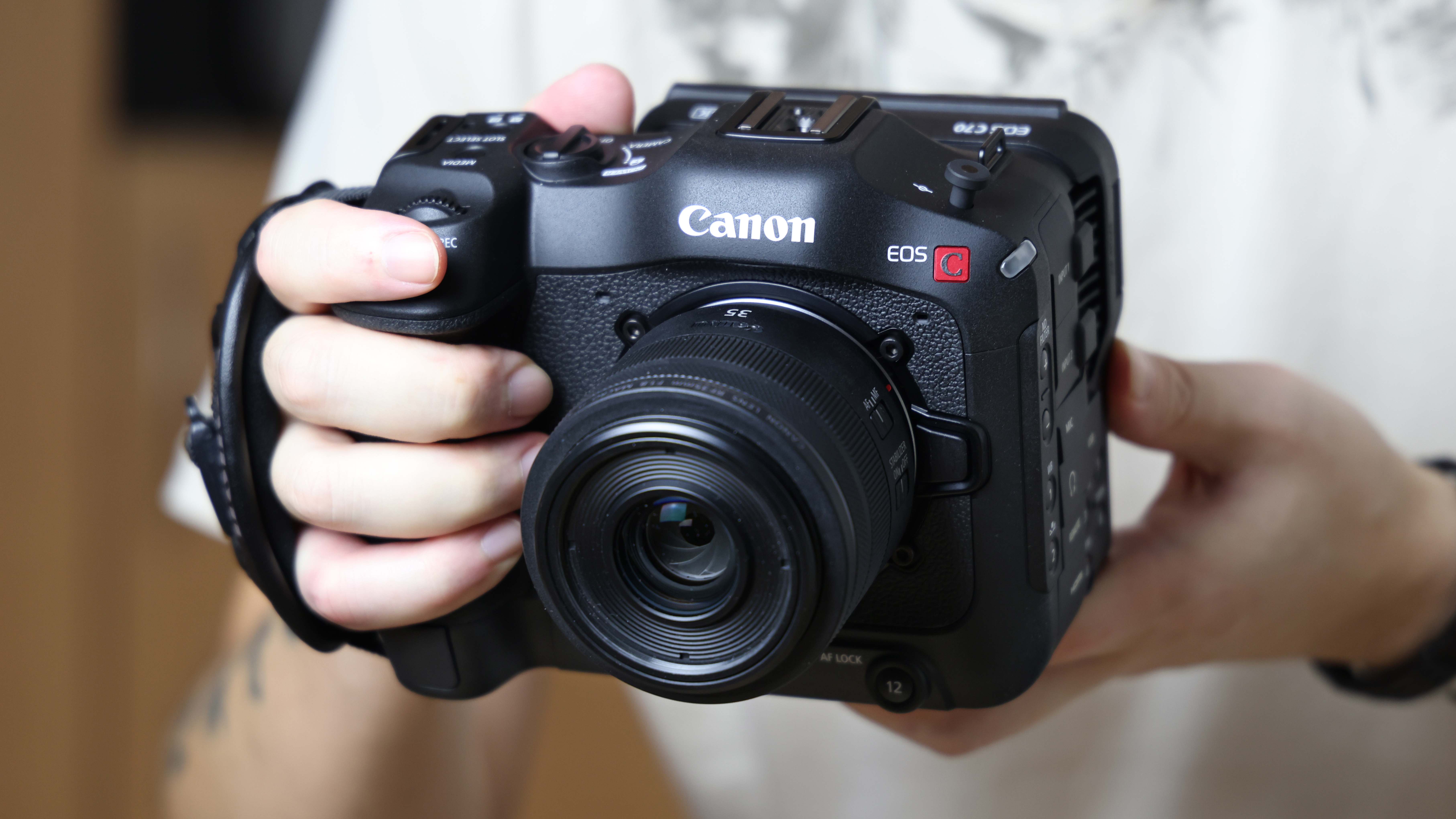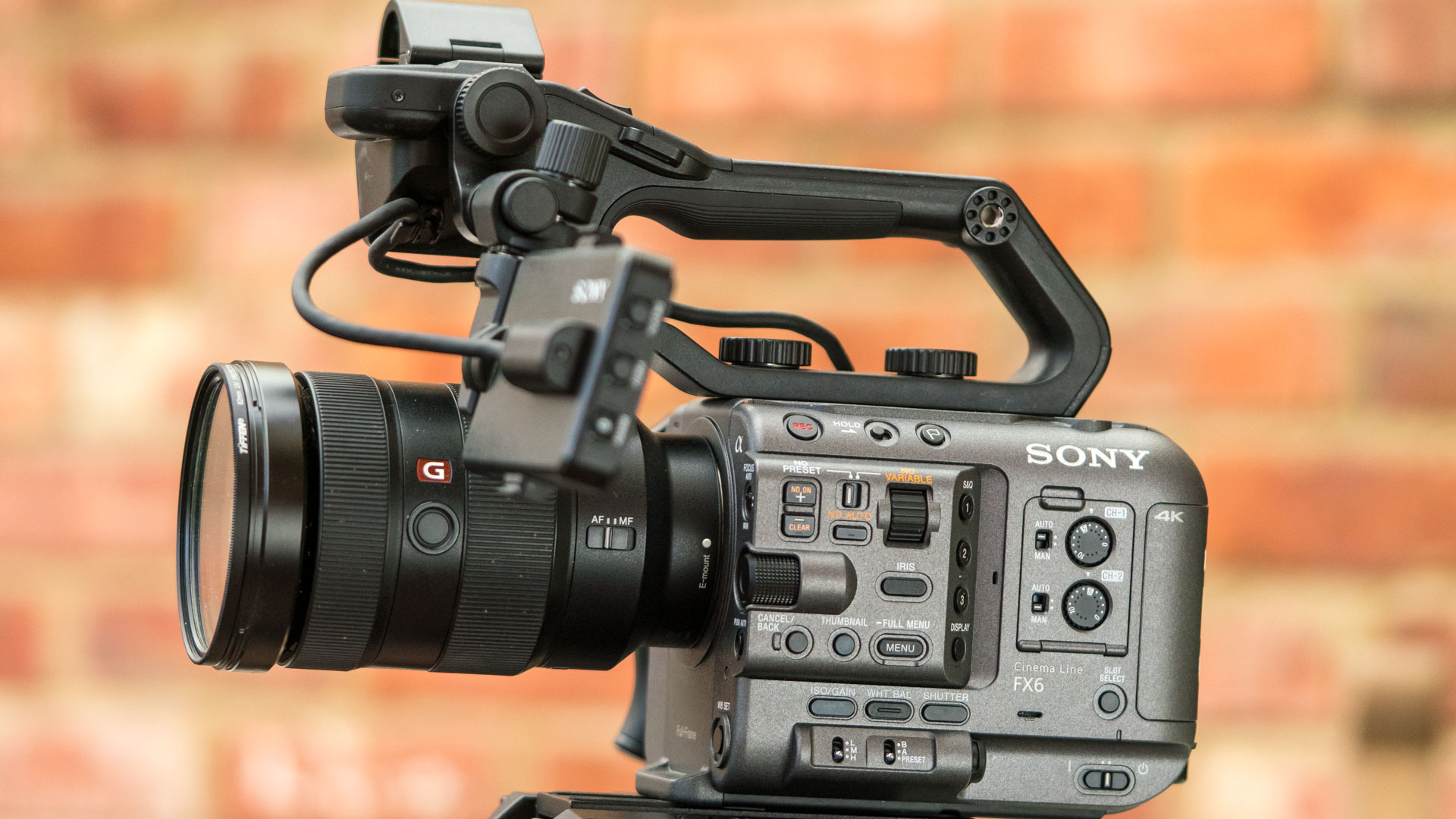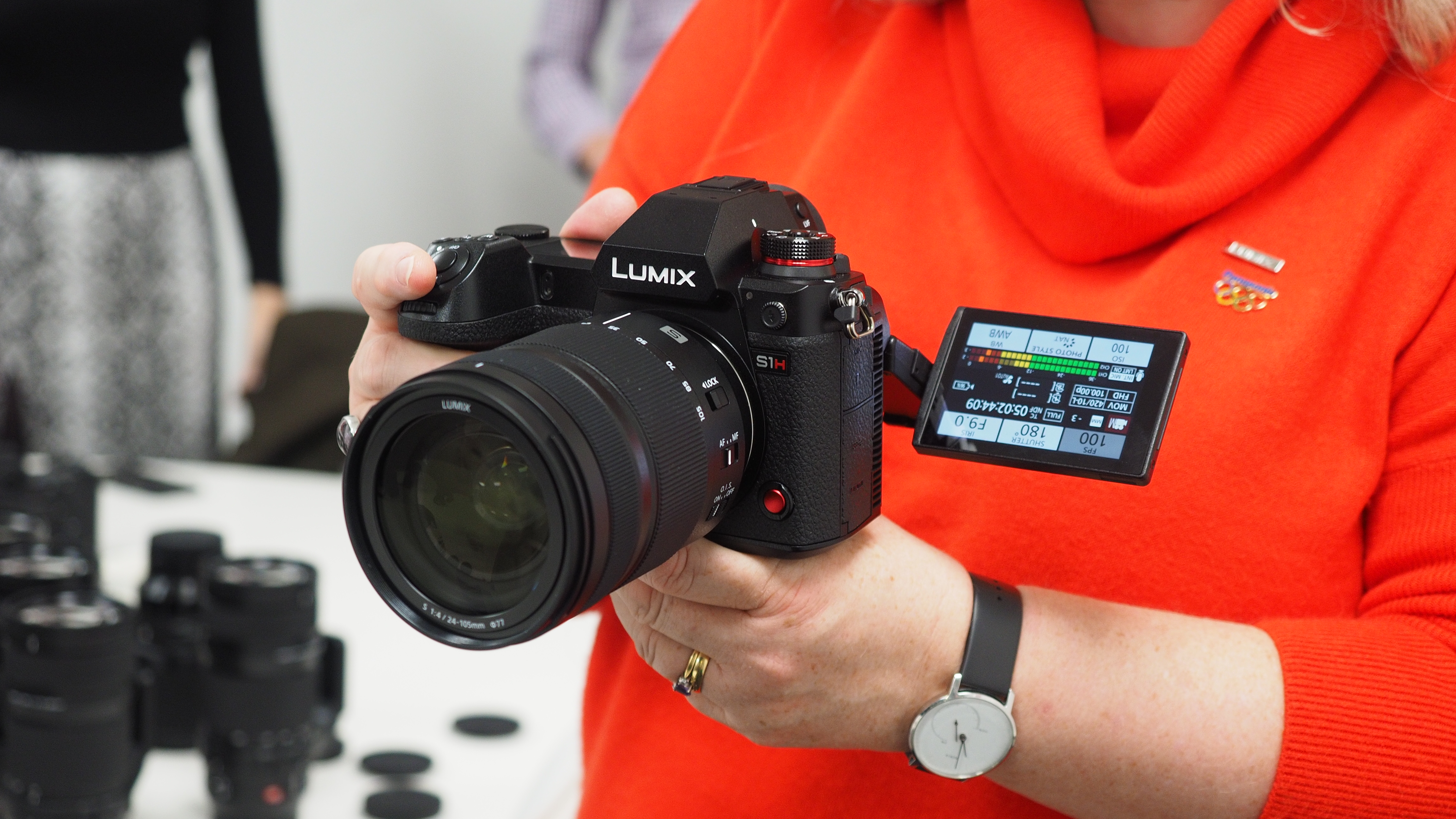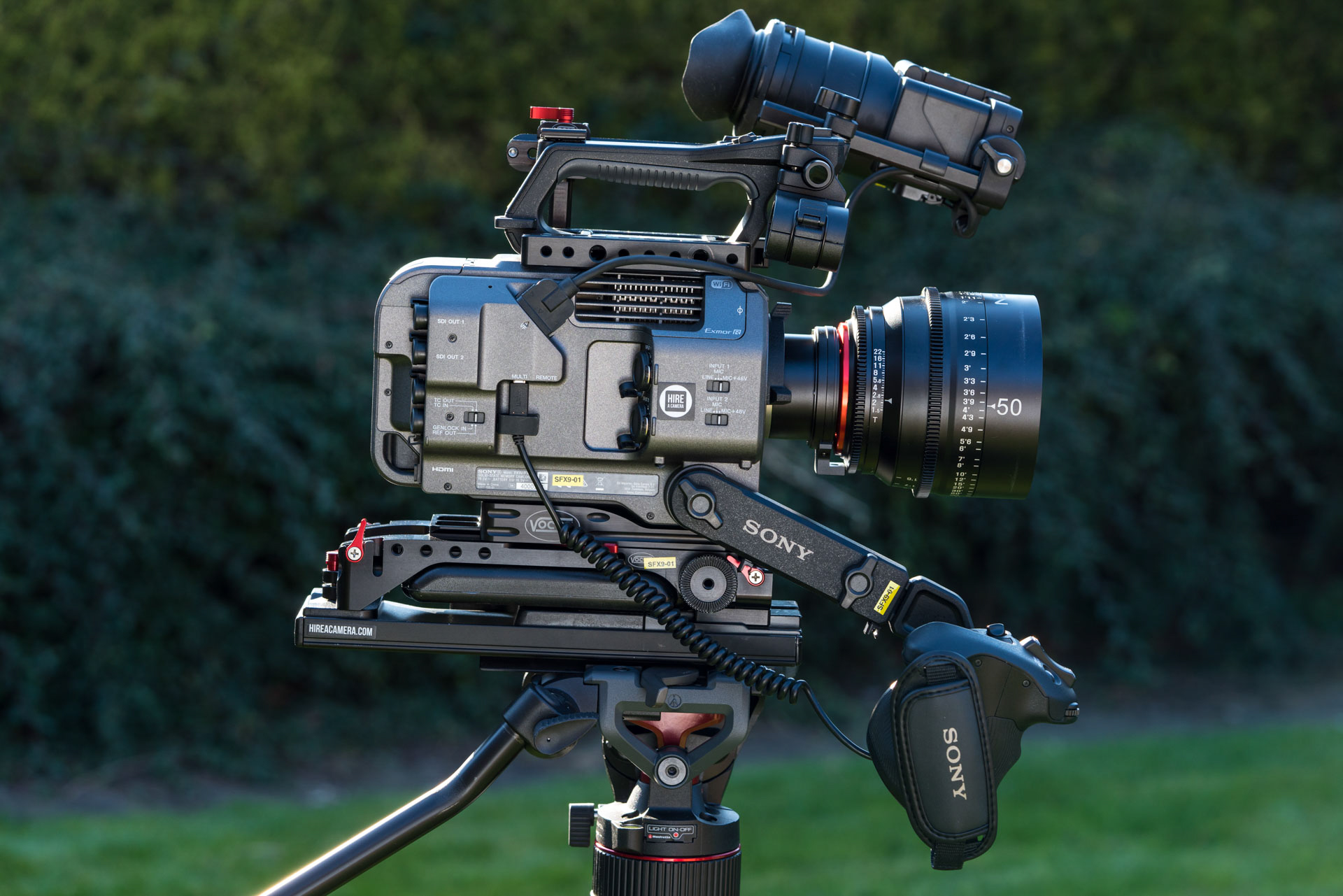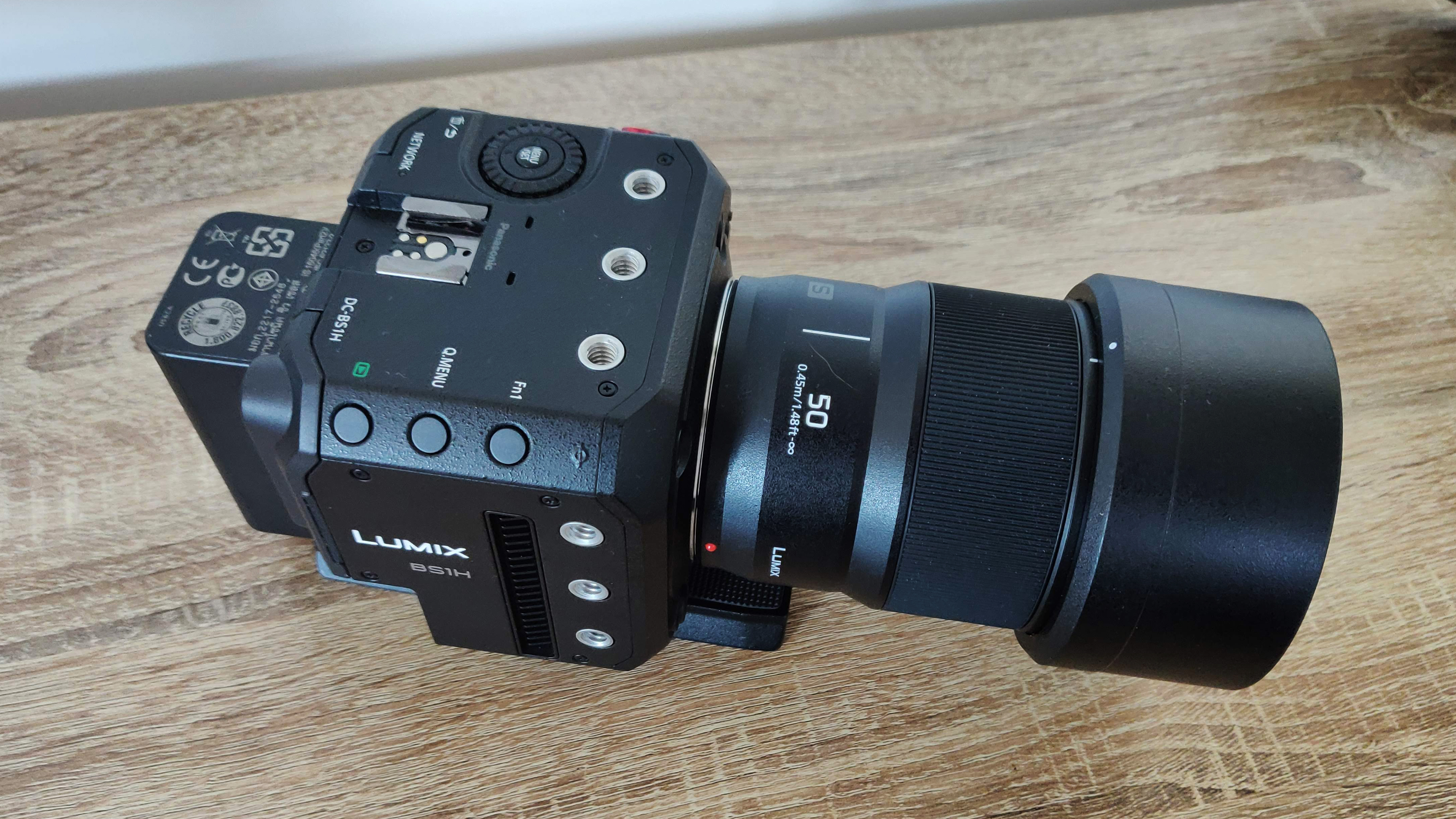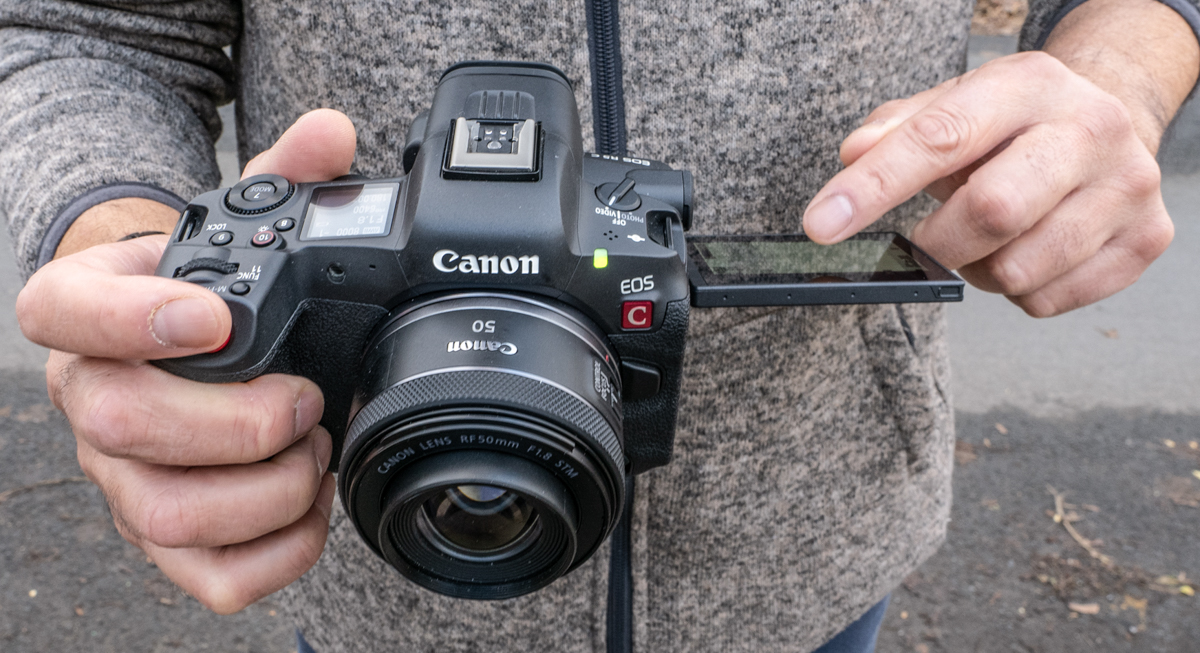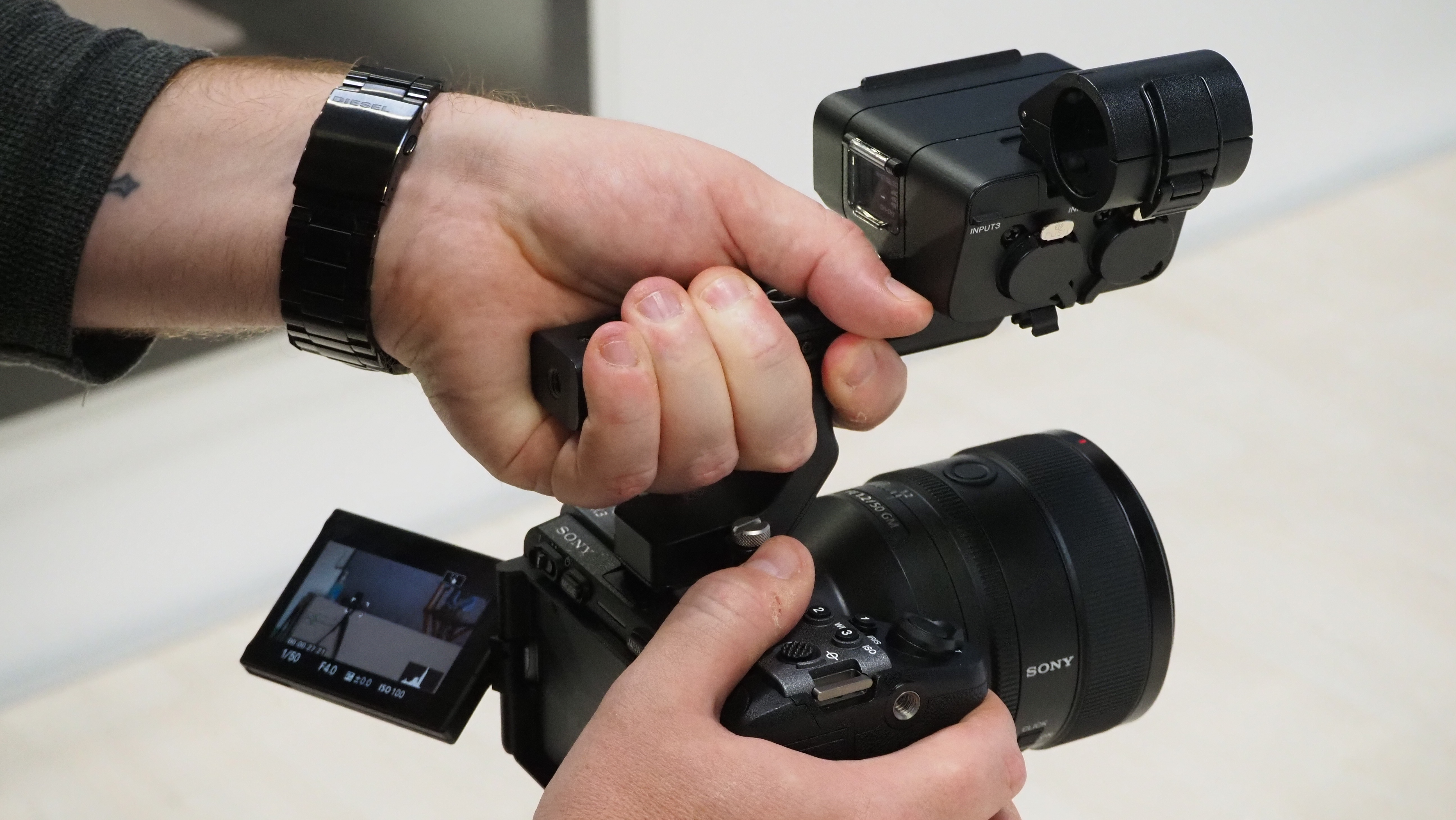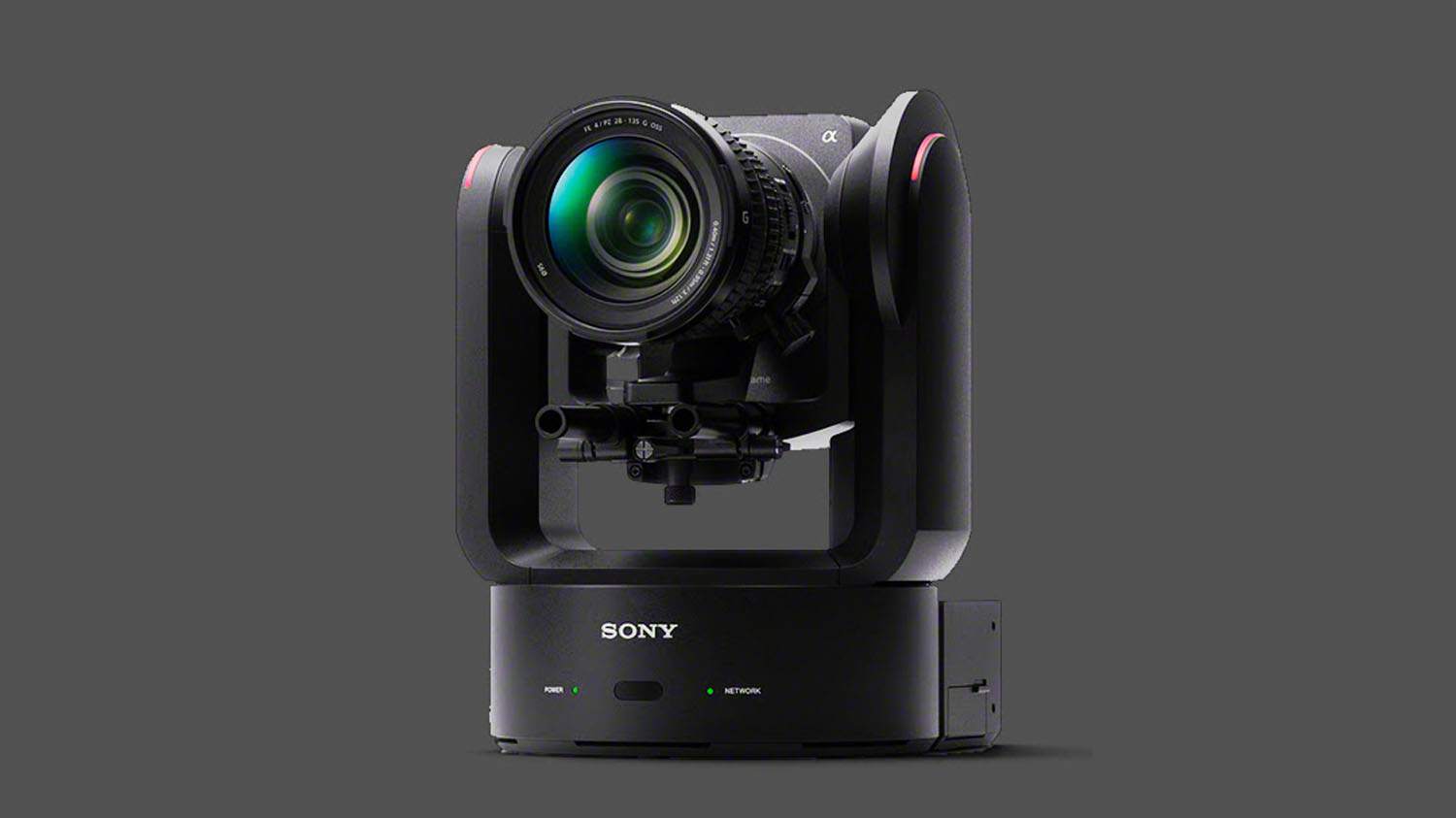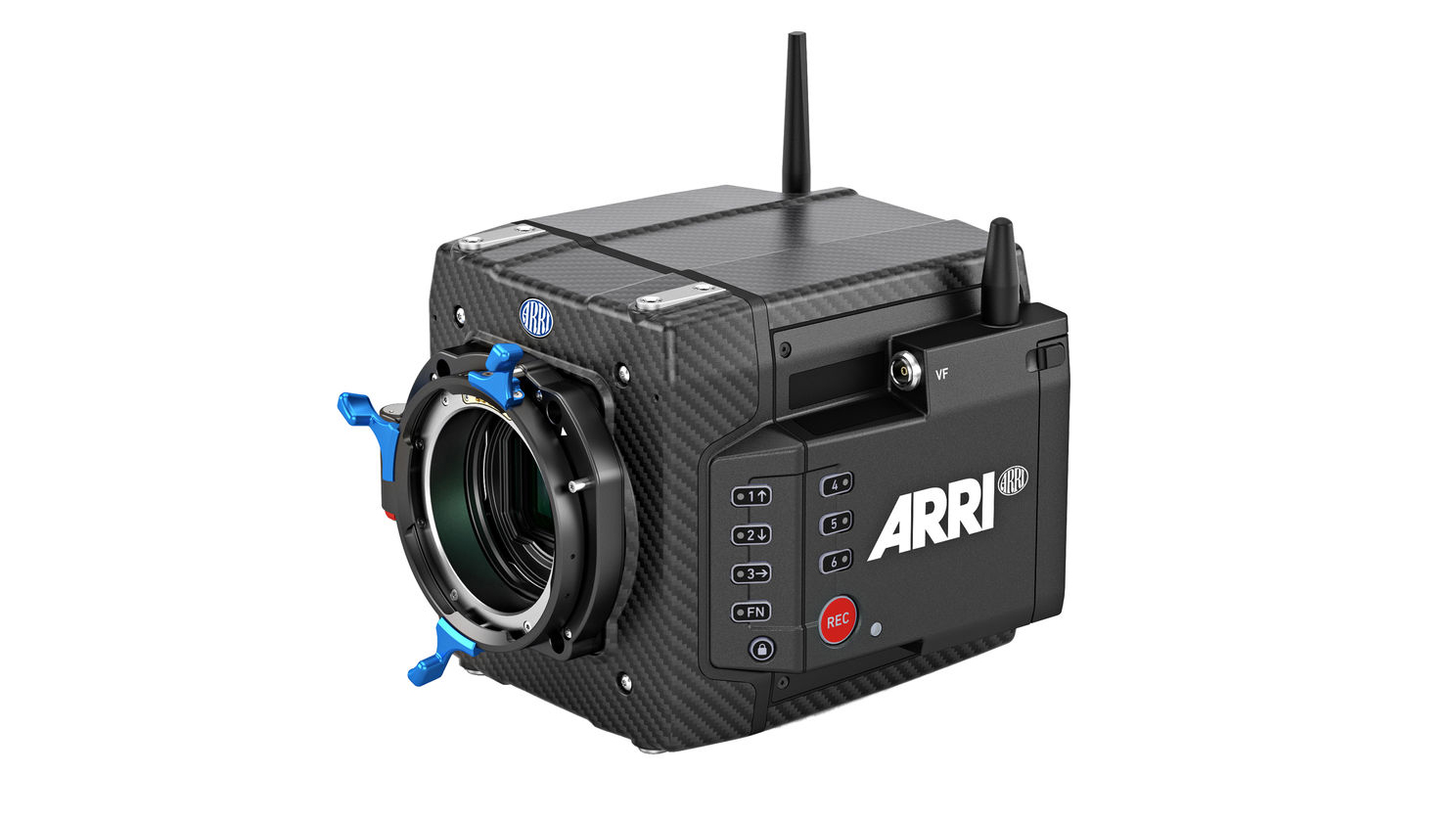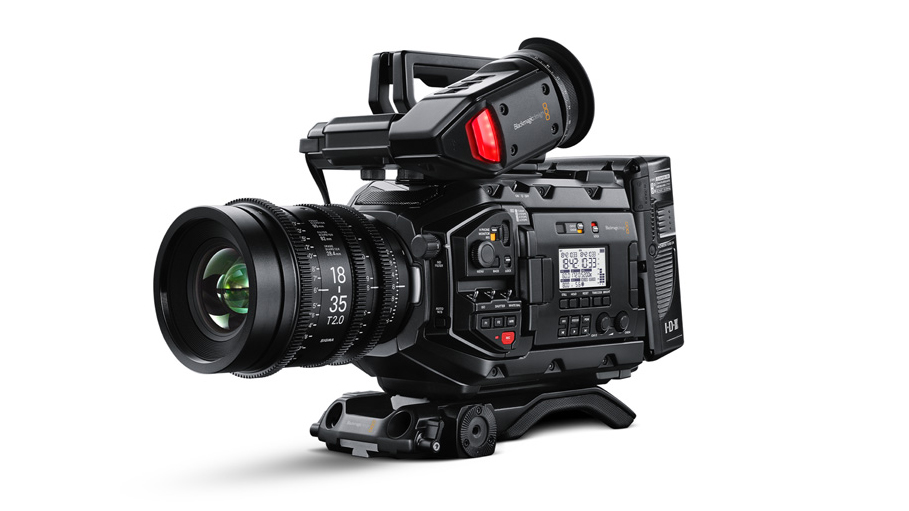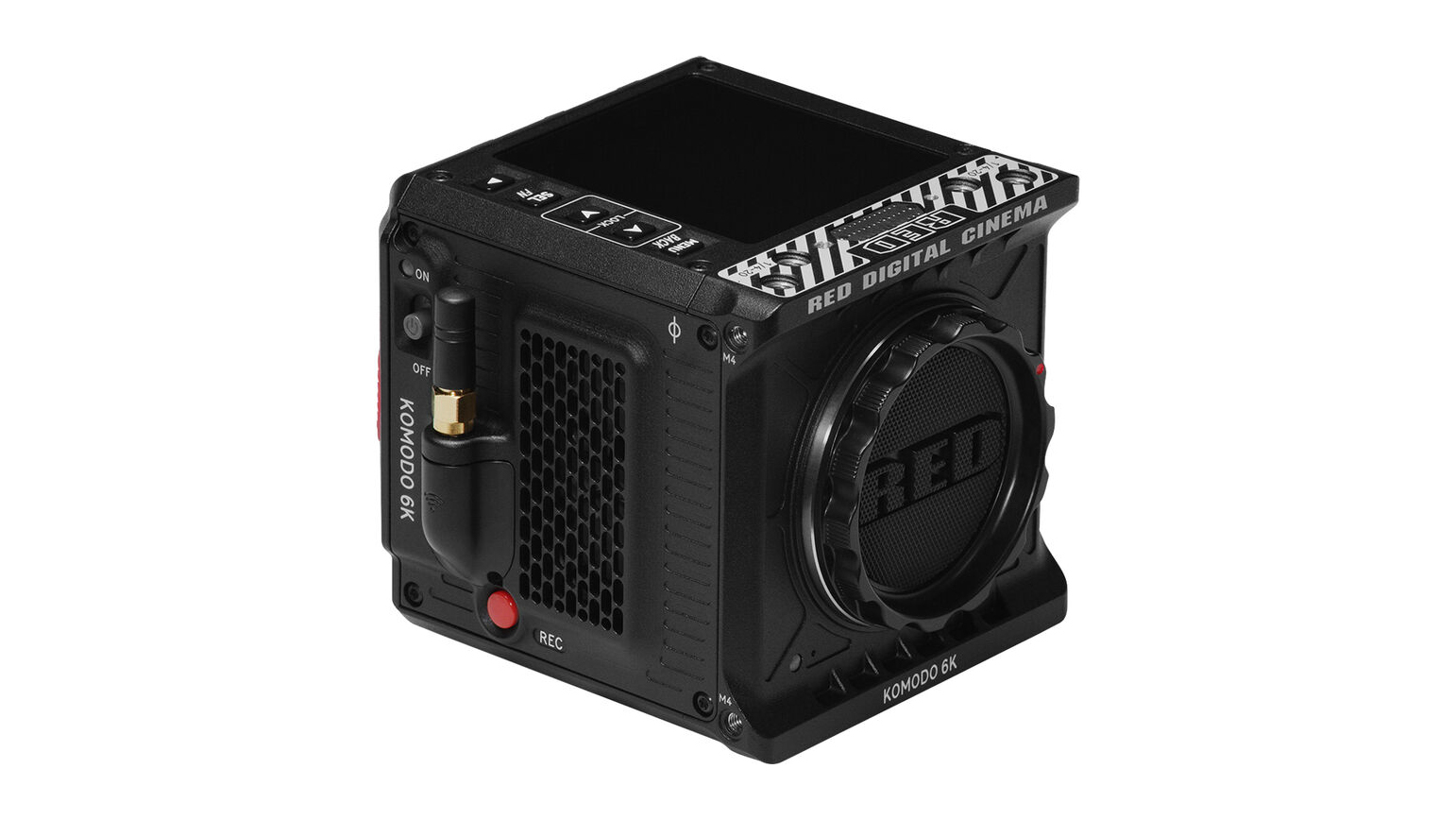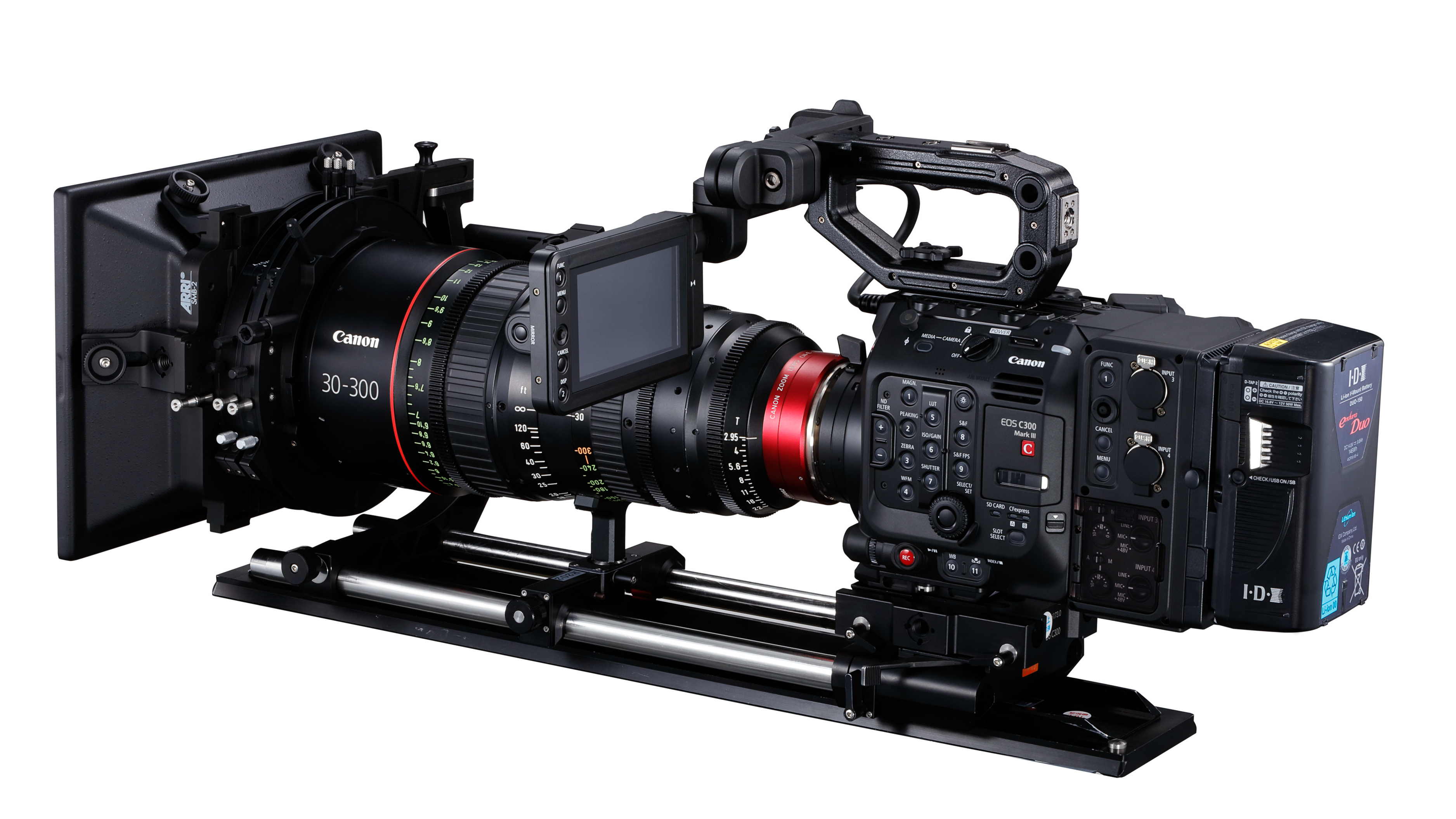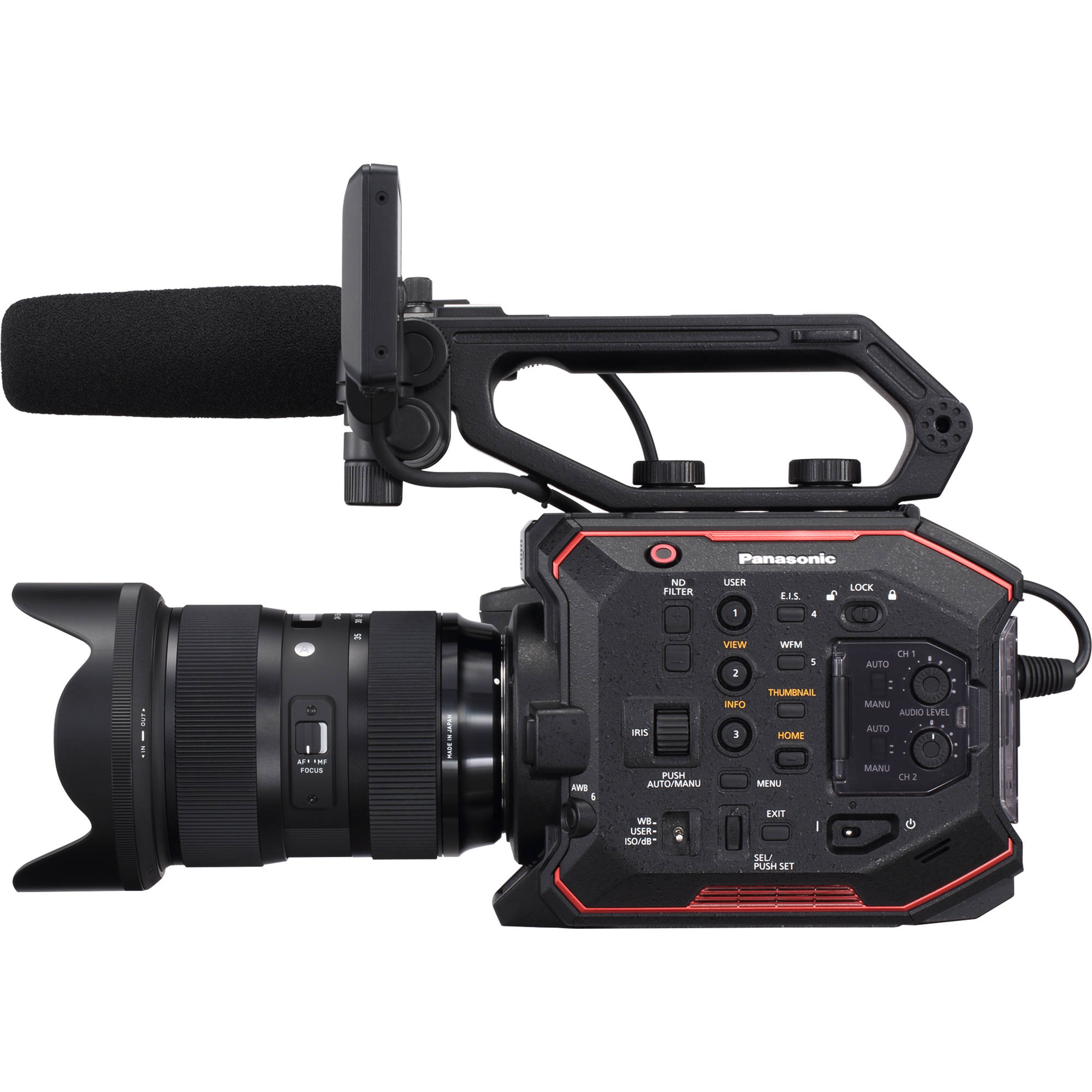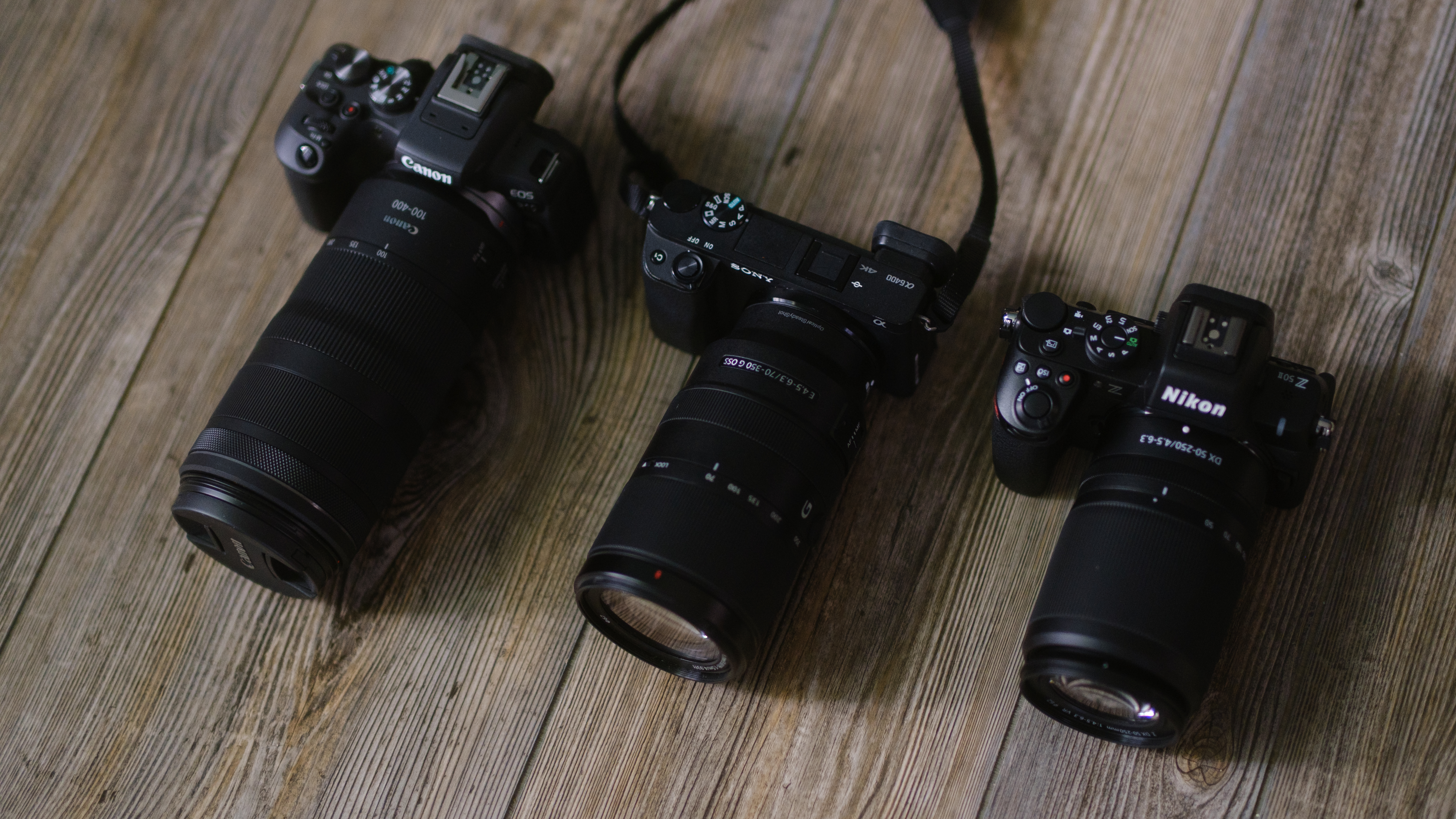Best Netflix-approved cameras in 2025
Want a Netflix-approved camera to shoot video? Here are the top certified options… you'll be surprised what's on the list
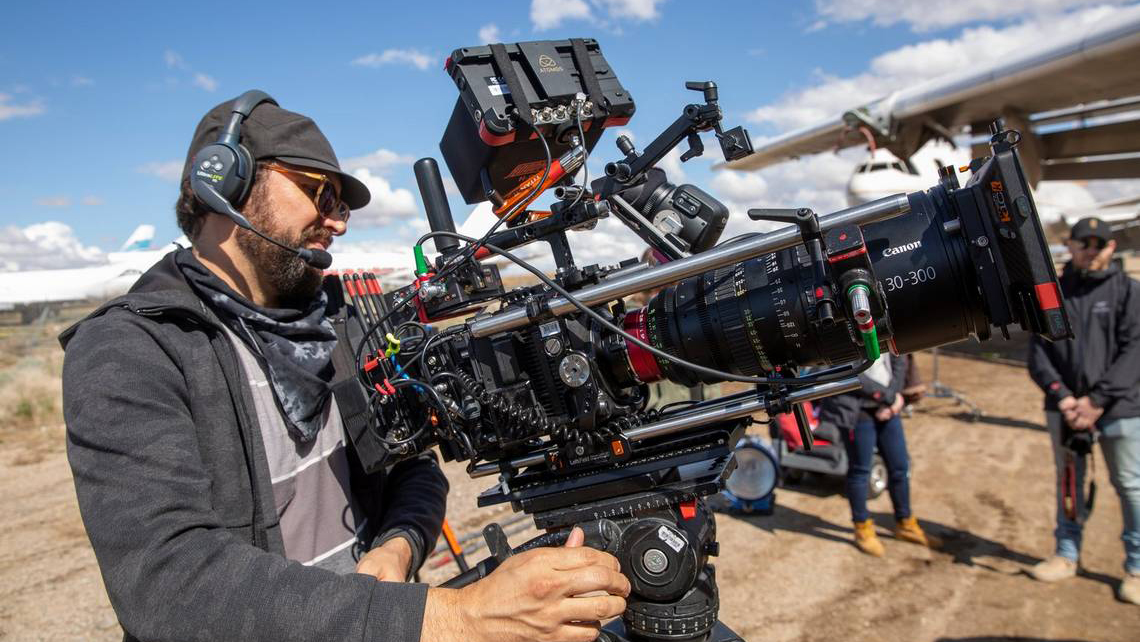
Are you searching for the best Netflix-approved camera? You’ve come to the right place. Netflix is arguably the leading streaming service, unmatched in size and original content output despite facing various challenges.
When it comes to camera technology, the choices Netflix makes are crucial if you want your film, TV series, or documentary to be featured on this pay-to-view platform. To have your work shown on Netflix, you can’t just use any camera; it must be on the Netflix-approved list.
Being “Netflix-approved” means that a camera meets the minimum specifications required to ensure it delivers the quality expected of a Netflix Original. This extensive list of certified cameras is detailed and available in full at the Netflix Partner help center. While some models are quite pricey and typically rented by filmmakers, there are also surprisingly affordable options on the list.
While Netflix approval should not be your sole consideration when purchasing a cinema camera, it’s definitely worth taking into account, especially since many cinema cameras are a significant investment. If you aim to create feature productions, starting with a camera that Netflix endorses can help you develop your craft and increase your chances of getting approved.

Sebastian is a professional sports photographer specializing in equestrian events. He has experience using various cinema cameras from brands like Sony, RED, and ARRI, giving him familiarity with many video cameras that are Netflix-approved.
Best Netflix approved cameras: our top picks
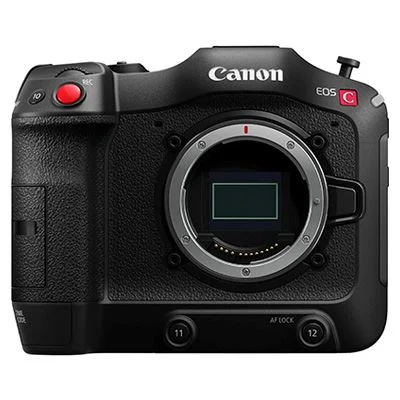
This digital cine camera can record up to DCI 4K 60p resolution video to dual slots using widely available and more affordable SD cards. High frame rates can be recorded in 4K up to 120 fps and up to 180 fps in a 2K cropped Super16 mode.
Read more below
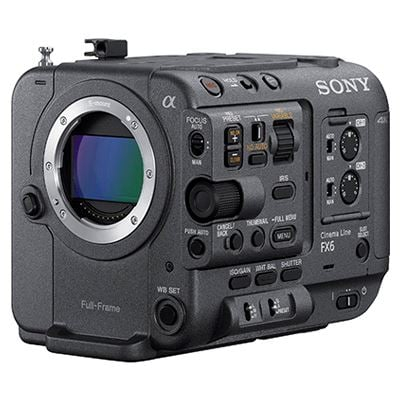
The Sony FX6 answers a real need for filmmakers that Sony's mirrorless Alpha cameras do not. For shooting video, there is nothing that comes close to using a real cinema camera that has professional controls and ergonomics.
Read more below
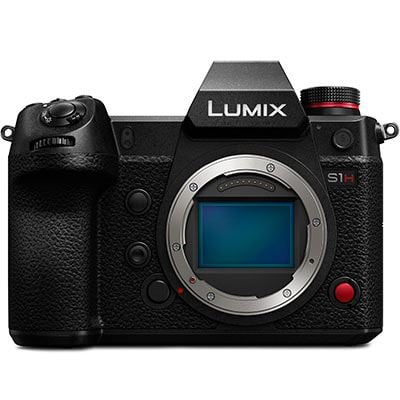
With the Lumix S1H, Panasonic has used its considerable video experience to bring many of its high-end VariCam features to the Lumix S range.
Read more below
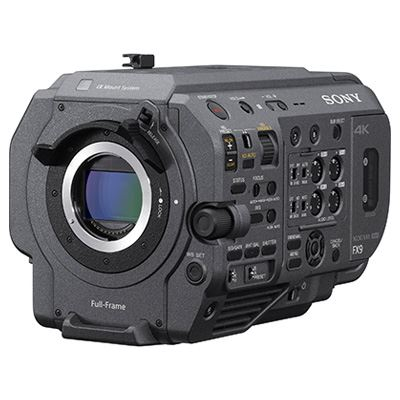
If you want a full-frame cinema camera that you don't need a Hollywood budget for, this is the perfect option.
Read more below
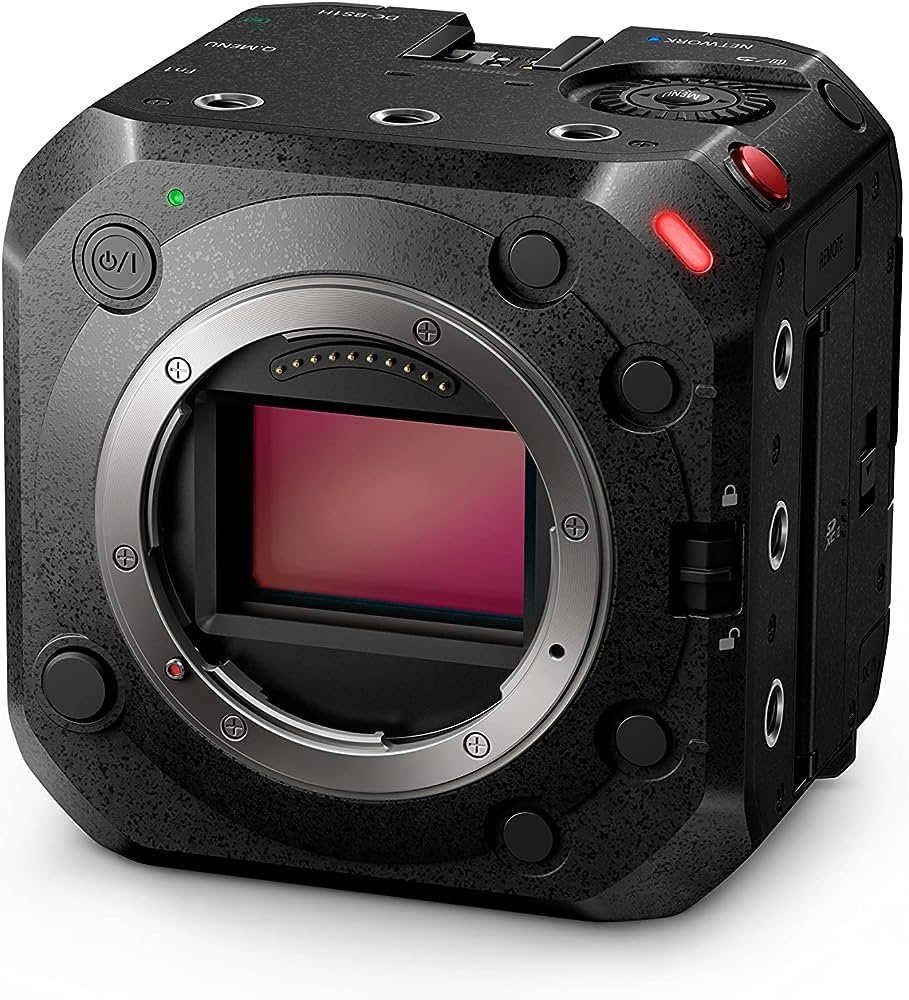
If you want the ultimate compact solution then a this 6K box-style camera is perfect for any lightweight rig that fits anywhere.
Read more below

If you want a professional video camera that is also just as good as stills, the Canon EOS R5 C is the best of both worlds.
Read more below
Best Netflix approved cameras
Why you can trust Digital Camera World
Best hand-held rig
Specifications
Reasons to buy
Reasons to avoid
✅ High-Resolution Recording: Capable of recording up to DCI 4K 60p resolution, offering excellent video quality.
✅ Versatile Codec Options: Includes Canon's XF-AVC, XF-AVC Intra, and XF-AVC Long GOP, providing high-quality 10-bit, 4:2:2 DCI 4K images with manageable storage needs.
❌ 2K Cropped Mode: The 180 fps option is limited to a cropped Super16 mode, which may not be ideal for all shooting scenarios.
❌ Complex Workflow Management: Simultaneous recording in different formats might require more intricate management during post-production.
This digital cine camera can record up to DCI 4K 60p resolution video to dual slots using widely available and more affordable SD cards. High frame rates can be recorded in 4K up to 120 fps and up to 180 fps in a 2K cropped Super16 mode.
Codec options include Canon's XF-AVC, XF-AVC Intra, and XF-AVC Long GOP, providing up to 10-bit, 4:2:2 DCI 4K images with reduced storage requirements. To boost your post-production workflow, the versatile EOS C70 supports both proxy recording rates and simultaneous recording in different formats, including 4K/HD and XF-AVC/MP4 options. The EOS C70 can also capture still images to SD card slot B when on standby in select video modes.
With all its features the Canon EOS C70 is a fine cinema camera in its own right and can be used for any shoot as an A camera however, it can also fit into your C300 Mk III workflow as a B camera allowing for smother workflows when a project hits the editing or color grading suite.
Read our full Canon EOS C70 review for more details
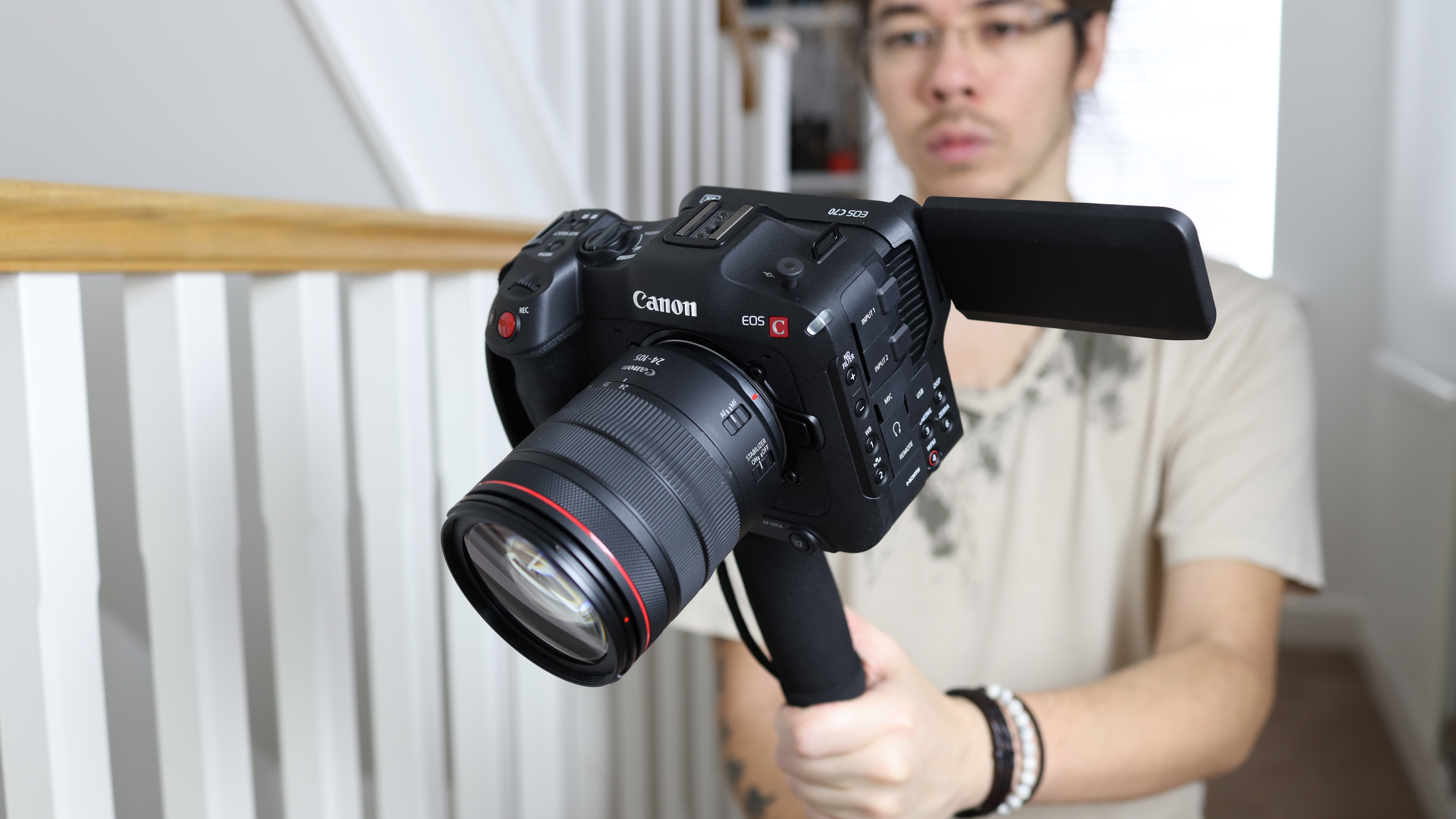
Best all-rounder
Specifications
Reasons to buy
Reasons to avoid
✅ Full-Frame Sensor: Features a full-frame BSI-CMOS sensor, inherited from the Sony A7S III, delivering high-quality video with advanced autofocus capabilities.
✅ DCI 4K Option: Capable of recording in DCI 4K at 17:9 XAVC-I 10-bit 4:2:2, offering a wider aspect ratio and higher recording bit rates for cinematic footage.
❌ Different Sensor from FX9: Uses the BSI-CMOS sensor from the A7S III rather than the 6K sensor from the FX9, which might be a downside for those expecting higher resolution downsampled footage.
❌ Higher Storage Requirements: The DCI 4K recording at 600Mbps requires significant storage space, which could lead to higher media costs.
The Sony FX6 answers a real need for filmmakers that Sony's mirrorless Alpha cameras do not. For shooting video, there is nothing that comes close to using a real cinema camera that has professional controls and ergonomics, multi-channel XLR audio, built-in ND filters, no overheating issues, and very long battery life. These cameras are purpose-made for the job but have lacked the full-frame sensor and advanced AF features that mirrorless camera users are used to, Until now.
The FX6 doesn’t use the same sensor as the FX9, which is actually 6K but downsampled to 4K. Instead, it inherits the same BSI-CMOS sensor from the Sony A7S III mirrorless camera and also the majority of its video spec and on-sensor phase detection autofocus.
So like the A7S III, the FX6 records in 4K at 60fps full frame with no crop, which is stored internally to SD or the same new CFexpress Type A cards as first used in the A7S III. While the mirrorless camera records only in 4K at 16:9, the FX6 can go to DCI 4K at 17:9 XAVC-I 10-bit 4:2:2 at up to 60p, recording at 600Mbps. But at this super-wide setting, the view actually becomes shallower (in height) to give the DCI-4K aspect ratio.
Read our full Sony FX6 review for more details
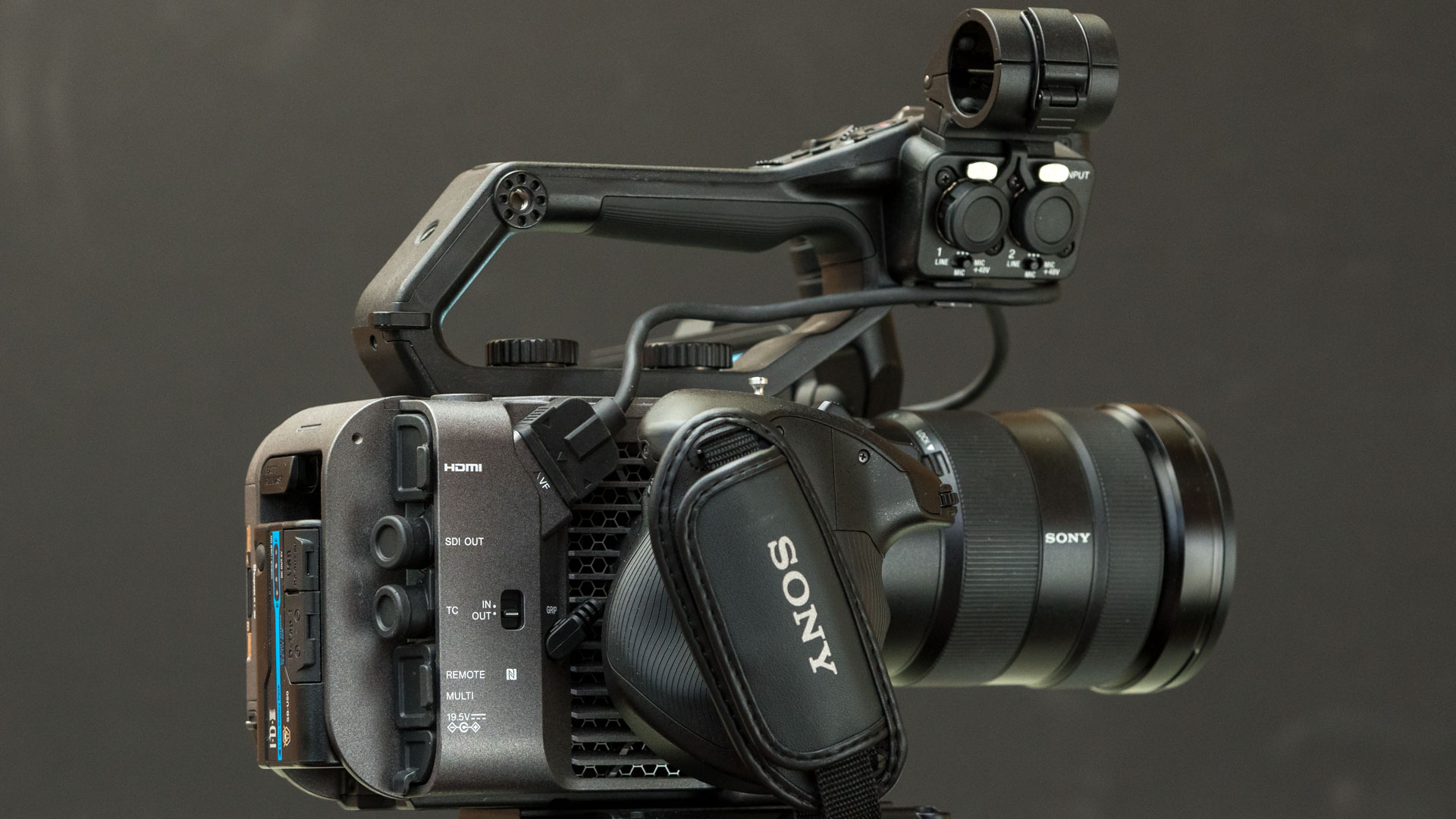
Best Hybrid package
Specifications
Reasons to buy
Reasons to avoid
✅ 6K Video Capture: Offers the ability to record in 6K resolution, either in a 3:2 ratio at 24p or 5.9K at 30p/25p/24p, providing exceptional video quality.
✅ It's a Versatile Camera: Acts as a bridge between conventional system cameras and high-end cine gear, making it suitable for both still photography and advanced cinematography.
❌ Processing Limitations: When capturing in 6K or 5.9K, the camera is restricted to a cropped Super 35mm format, which may not be ideal for all shooting scenarios.
❌ 8-Bit Restrictions: While it offers 8-bit recording, it may not be sufficient for footage that requires extensive grading, potentially leading to banding and clipping issues.
With the Lumix S1H, Panasonic has used its considerable video experience to bring many of its high-end VariCam features to the Lumix S range. The controls, the interface, and certainly the hardware have been built for video and cinematography, and the fact it’s also a very serviceable 24MP stills camera is a bonus. It’s a very interesting ‘bridge’ between conventional system cameras and higher-end cine gear, especially for existing Panasonic videographers, it has the power for professional video productions.
The headline spec is its ability to capture 6K video (yes, 6K), either in a 3:2 ratio at 24p and 10-bit 4:2:0 quality, or 5.9K in a conventional 1:9 ratio at 30p/25p/24p. At this level, though, processing power is the limiting factor, so with 6K or 5.9K capture, you’re restricted to the cropped Super 35mm format.
The bit-depth is important. 8-bit capture is OK for video footage that’s not going to be heavily edited or ‘graded’ later, but if you’re going to apply heavy adjustments and especially if you’re going to use V-Log modes, you really need the extra bit-depth of 10-bit capture to avoid banding, clipping and other artifacts.
The S1H does offer full-frame (uncropped) capture for 4K, with 4:2:2 10-bit internal recording and speeds up to 60p. You can use 60fps capture and playback for fast action, or 30fps playback for a 2x slow motion effect.
Read our full Panasonic S1H review for more details
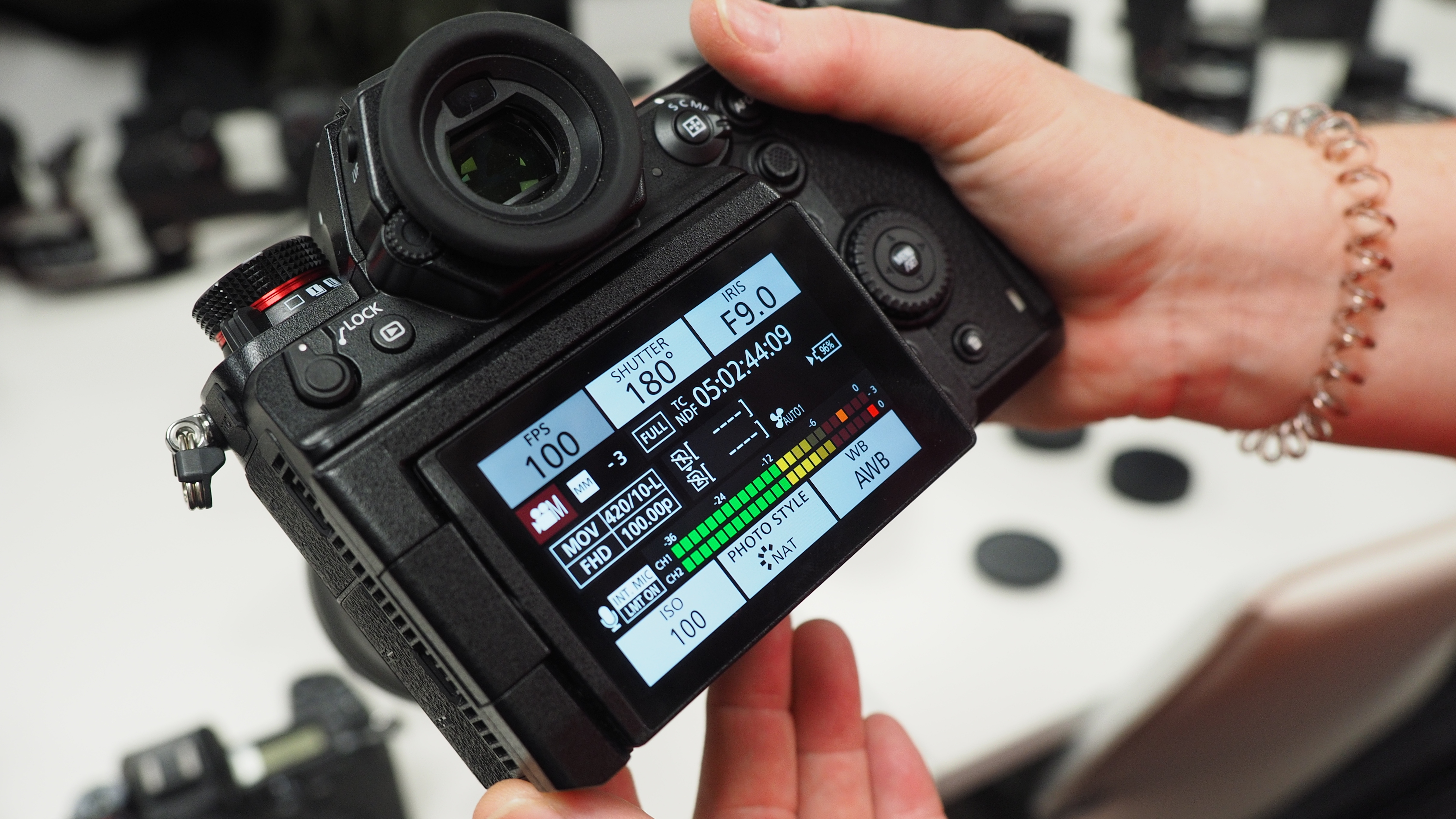
Most affordable full-frame
Specifications
Reasons to buy
Reasons to avoid
✅ Advanced Autofocus System: Incorporates the hybrid autofocus system from Sony's Alpha mirrorless cameras, providing highly customizable and reliable AF for professional shoots.
✅ Professional Features: Includes stepless built-in ND filters, long battery life, and professional connections like SDI and XLR, making it well-suited for serious videographers.
❌ 4K Output from 6K Sensor: The 6K sensor is oversampled to produce a 4K image, which may not appeal to those specifically seeking native 6K recording.
❌ High Price Point: While offering great value, the FX9 is still a significant investment, which might be a consideration for budget-conscious filmmakers.
The Sony FX9 is a serious full-frame video camera that, despite its price, offers great value for serious videographers. Sony, of course, knows a lot about what serious filmmakers need – as proven by the popularity of its FS7 camera which has been a smash hit since its launch. It’s been the mainstay of many independent production companies all over the world, thanks to its Super35mm sensor, fast frame rates, and great image quality.
But time and technology have moved on, and the most discerning cinematographers now want a full-frame sensor ideal for high ISO performance and shallow depth of field, along with a useable AF system that uses phase detection and is hugely customizable. Live streaming is also far more important than ever, and for those who want to grade the footage to within an inch of its life, internal RAW recording is the way to go.
Sony’s answer is to make a super-advanced version of the FS7 with its stepless built-in ND filters, long battery life, professional connections such as SDI and XLR audio inputs, and great ergonomics. Then use a backside-illuminated, full-frame sensor and the super-advanced hybrid autofocus system from the Alpha mirrorless cameras.
For even better control of noise, Sony added Dual Base ISO 800/4000 and S-Cinetone color science from the upmarket Venice cinema camera which costs around three times as much. This is an amazing camera that offers a lot of professional features, if you are not looking for a full-frame sensor and don't mind its 6K sensor oversampling to a final 4K image, the FX9 is really a great choice.
Read our full Sony FX9 review for more details
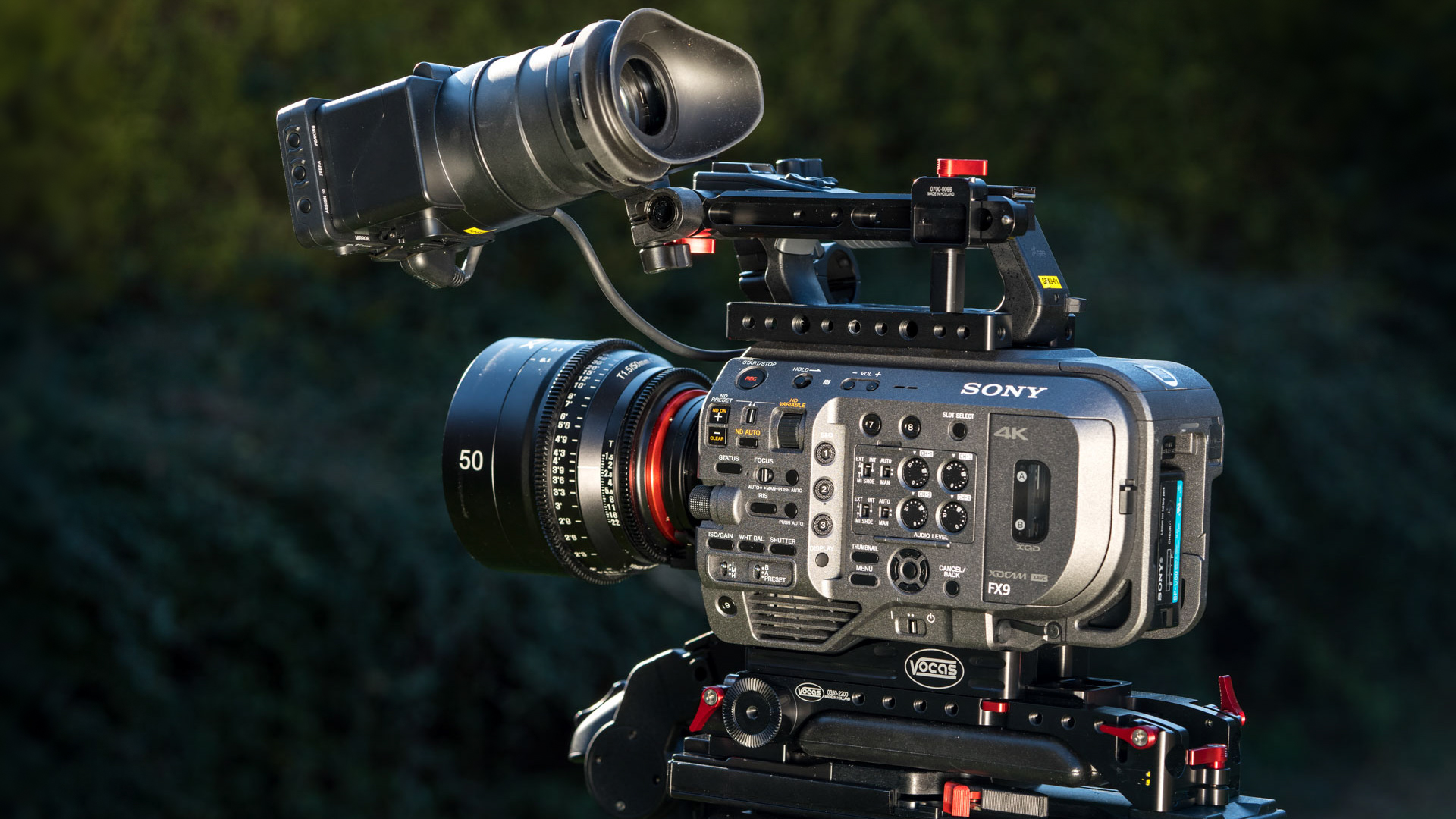
Best box-style
Specifications
Reasons to buy
Reasons to avoid
✅ High-Resolution Recording: Equipped with a 24.2-megapixel full-frame sensor capable of recording 6K 24p or 4K 60p 10-bit video, offering high-quality footage.
✅ Modular Design: The box-style form factor allows for flexible rigging and the ability to attach external devices like the Atomos Ninja V for 12-bit raw video output.
❌ No Built-In Screen: The lack of a built-in display may require additional equipment for monitoring, which can increase setup complexity and cost.
❌ Limited Full-Frame 4K Options: When using the entire full-frame sensor area, the camera is limited to 4K 30p 10-bit recording, which might not meet the needs of all users.
For serious video shooters, the Panasonic Lumix BSH1 box cam can make a lot of sense as it can be rigged up for a multitude of different uses. It has a 24.2-megapixel full-frame sensor with Dual Native ISO technology, 14+ stops of dynamic range, and an OLPH (Optical Low Pass Filter) which helps to suppress moire and false colors and make it excellent in low light.
It's capable of recording 6K 24p or 4K 60p 10 bit when using an image area equivalent to Super 35mm. If you're using the entire 35mm sensor area, it can shoot 4K 30p 10-bit 4.2.2 in H.264.
With live streaming growing increasingly popular, the BS1H is capable of transmitting high-quality footage to social streaming platforms over a wired LAN collection. It can stream 4K 60p video in H.265 which means the bit rate is halved and the image quality is kept the same.
The lack of a screen may be off-putting but its modular system means you can easily attach an external recorder such as the Atmos Ninja V which will also make it capable of outputting 12-bit raw video.
Read our full Panasonic Lumix BS1H review for more details
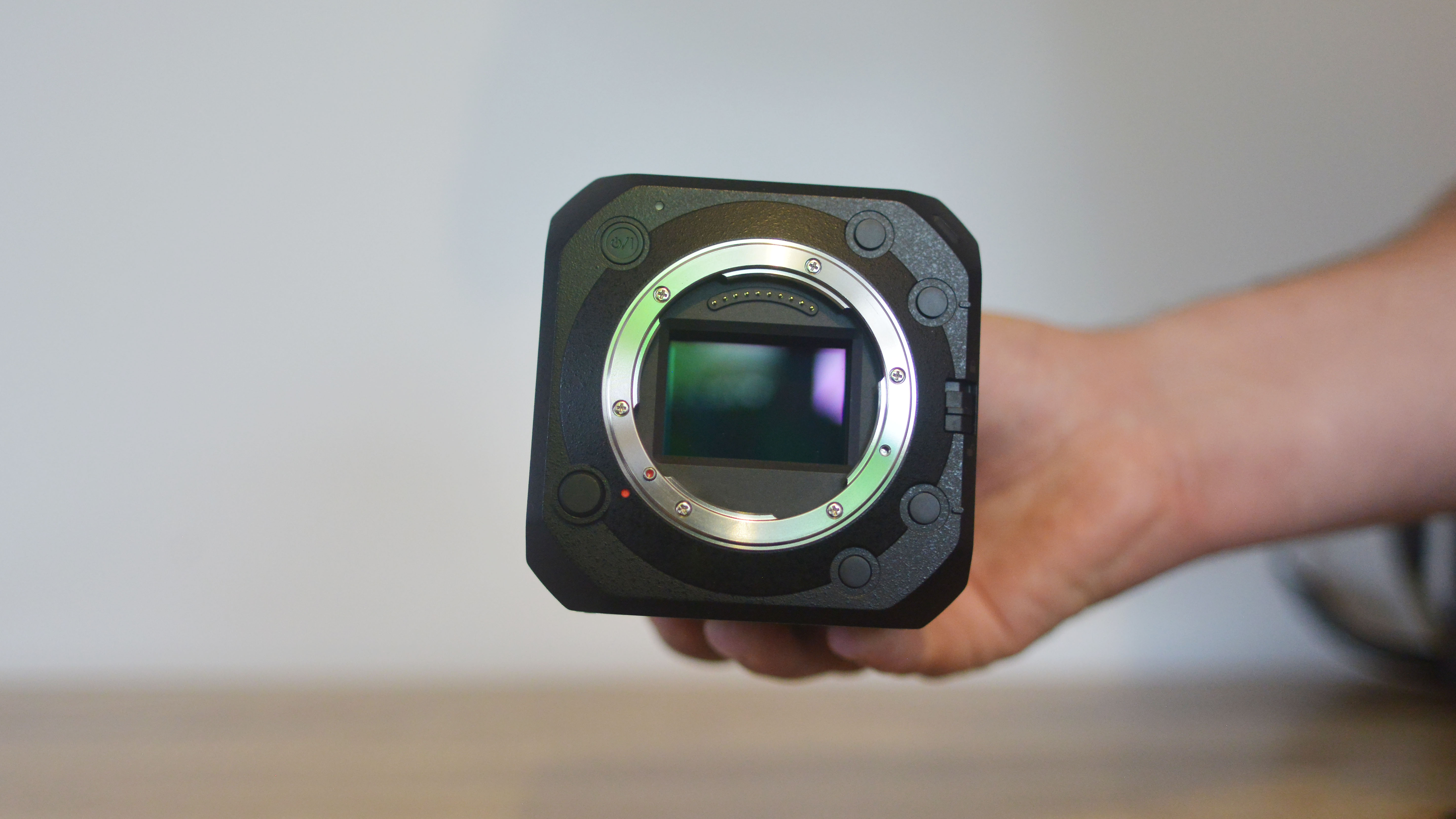
Best for still and video
Specifications
Reasons to buy
Reasons to avoid
✅ 8K Video Capability: Features an 8K CMOS sensor capable of recording up to 8K 60p video in Cinema RAW Light format, providing exceptional video quality without the need for an external recorder.
✅ Still Photography Excellence: Shares the same 45MP CMOS sensor and Digic X image processor as the Canon EOS R5, offering exceptional image quality for stills.
❌ Power Limitation for 8K Recording: Requires mains power to record 8K video at 60p, with battery operation limited to 8K 30p, which might be a drawback for mobile shooting.
❌ Complexity in Operation: Balancing both high-end video and stills features can be overwhelming for users who need a simpler workflow.
The 8K CMOS sensor within the Canon EOS R5 C can produce high-quality video at up to 8K 60p resolution (while connected to mains power; using batteries, it maxes out at 30p) while using the Cinema RAW Light format, which is a high-efficiency mode that enables internal card recording without an external recorder.
The EOS R5 C camera supports HDR recording in Hybrid Log Gamma (HLG) and Perceptual Quantization (PQ) format, which helps ensure full color rendition and wide latitude with a great range from black to pure white – which can work wonders for delivering of livestreams, broadcasts, and post-production projects. Both 5.9K in Super 35mm and 2.9K in Super 16mm are also available for internal recording to the CFexpress card.
Still-imaging features and operation are nearly identical to Canon's EOS R5 camera. The R5 C camera features the same 45MP CMOS sensor and a slightly modified Digic X image processor capable of ISO100-51,200 (expandable to 102,400 – though the R5 C also boasts Dual Base ISO for superior video). All this means peak performance and phenomenal image quality for big prints, impressive video and more.
Read our full Canon EOS R5 C review
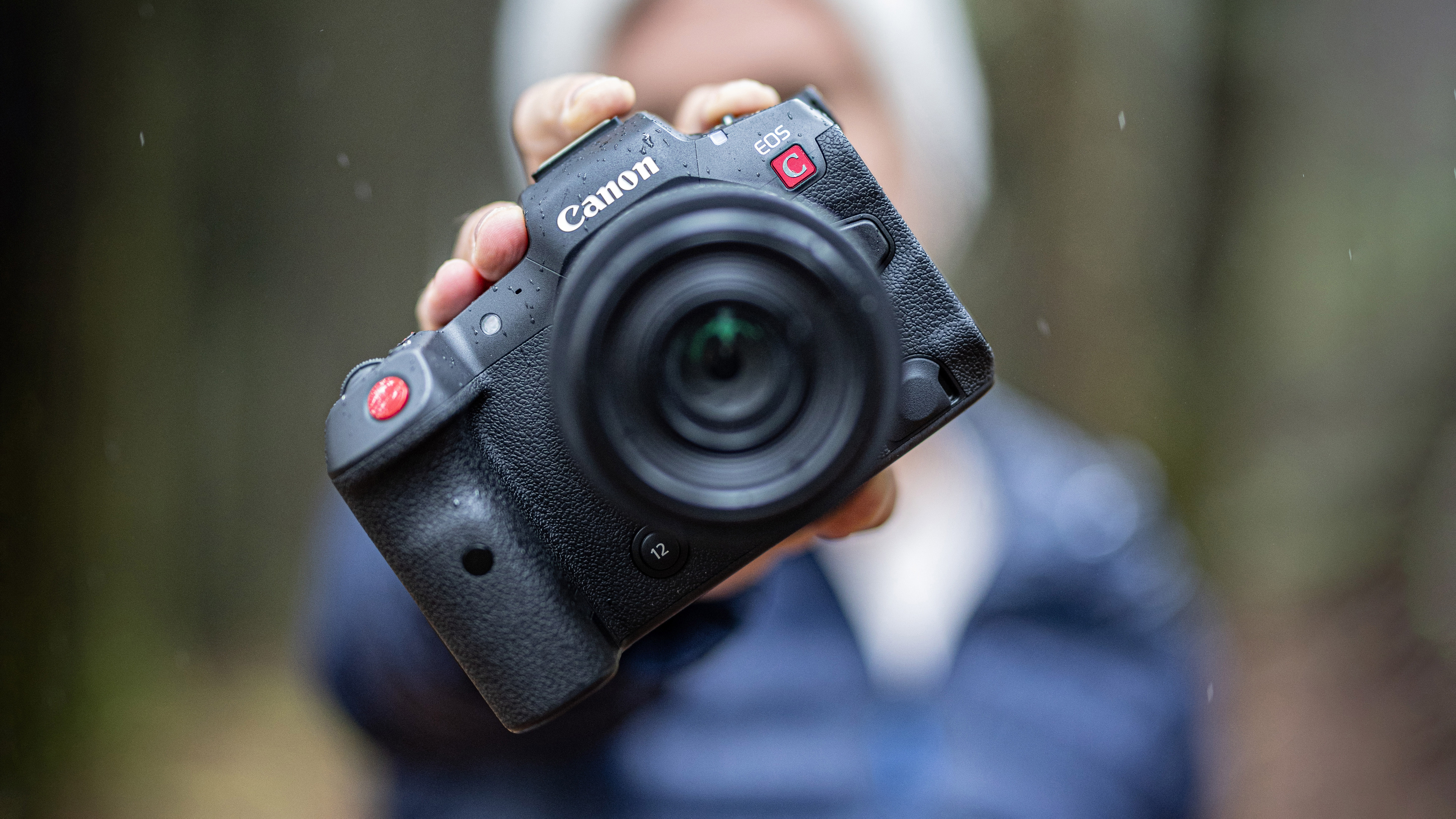
Best compact camera
Specifications
Reasons to buy
Reasons to avoid
✅ Detachable Handle with XLR Inputs: Comes with a detachable handle that includes XLR audio inputs, enhancing audio recording quality and versatility on set.
✅ Integrated Mounting Points: The FX3 is equipped with integrated mounting points, making it easier to rig up for various shooting scenarios without additional cages or accessories.
❌ High Demand: Due to its recent release and high demand, availability might be limited, and thorough testing by reviewers is still pending.
❌ Unconventional Appearance: The speckled grey color and overall design may not appeal to users who prefer the traditional look of cinema cameras.
What sets the Sony FX3 apart from other video-centric Sony cameras such as the Sony A7S III is the speckled grey color of the casing. We have a sneaky suspicion that the FX3 is what the A7S III should've been all along and despite being part of the FX family it very much looks like the Alpha series cameras.
However, the FX3 is without a doubt a certified movie camera complete with Sony Cinetone0S color science, a detachable handle with XLR audio input, integrated mounting points, and a movie-specific control layout that is a complete change to what we know on existing Alpha models.
It's so new that we still haven't been able to test it yet due to high demand but we suspect that once we've had the chance to put it through its paces it's likely to appear much higher on this list.
Read our Hands on: Sony FX3 review for more details
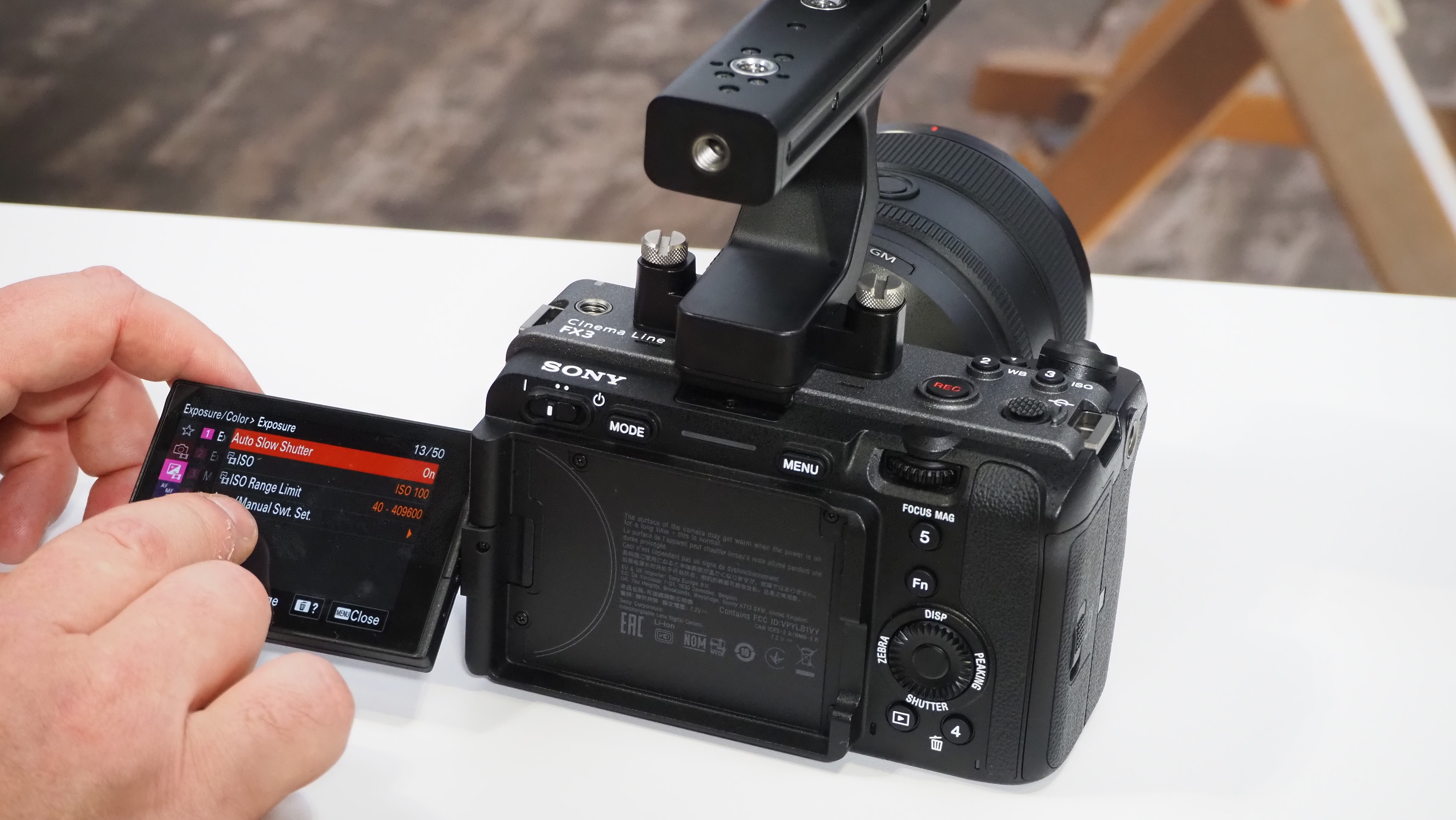
Best PTZ cinema
8. Sony FR7
Specifications
Reasons to buy
Reasons to avoid
✅ Remote Pan/Tilt/Zoom (PTZ) Control: Allows for high flexibility in remote camera operation, breaking through traditional location and space limitations, ideal for complex shooting environments.
✅ Versatile Connectivity: Supports 4K RAW 16-bit recording over SDI or BNC, as well as DCI 4K and UHD 4K internal recording, making it a strong choice for both broadcasting and film production.
❌ High Cost: As a professional-grade camera with advanced features, the FR7 may be priced out of reach for smaller production teams or individual creators.
❌ Niche Use Case: The specialized nature of PTZ cameras like the FR7 may limit its appeal to a broader audience, making it more suited for specific production environments.
The Sony FR7 has a full-frame image sensor and Sony’s extensive E-mount lens lineup work with remote pan/tilt/zoom control, high flexibility in zoom capability, and wide-angle shooting to break through location and space limitations. It also offers the cinematic look and operability that have made Sony digital cinema cameras push the boundaries of the filmmaking industry, plus versatile connectivity and efficient multi-camera workflow support.
The fun features do not stop there. The FR7 is also compatible with the full Sony PTZ controller range with ethernet, so operators will have a seamless transition. For the digital age, though, Sony has developed a purely digital offering based on a browser operating system, which enables you to control all the camera settings, select output, and for the even more tech-savvy among us, you can even access, control, and monitor the FR7 from your tablet or phone.
Along with 4K RAW 16-bit recording over SDI or BNC, as well as DCI 4K and UHD 4K recording internally this PTZ camera is certainly up to the task when it comes to broadcasting and film production.
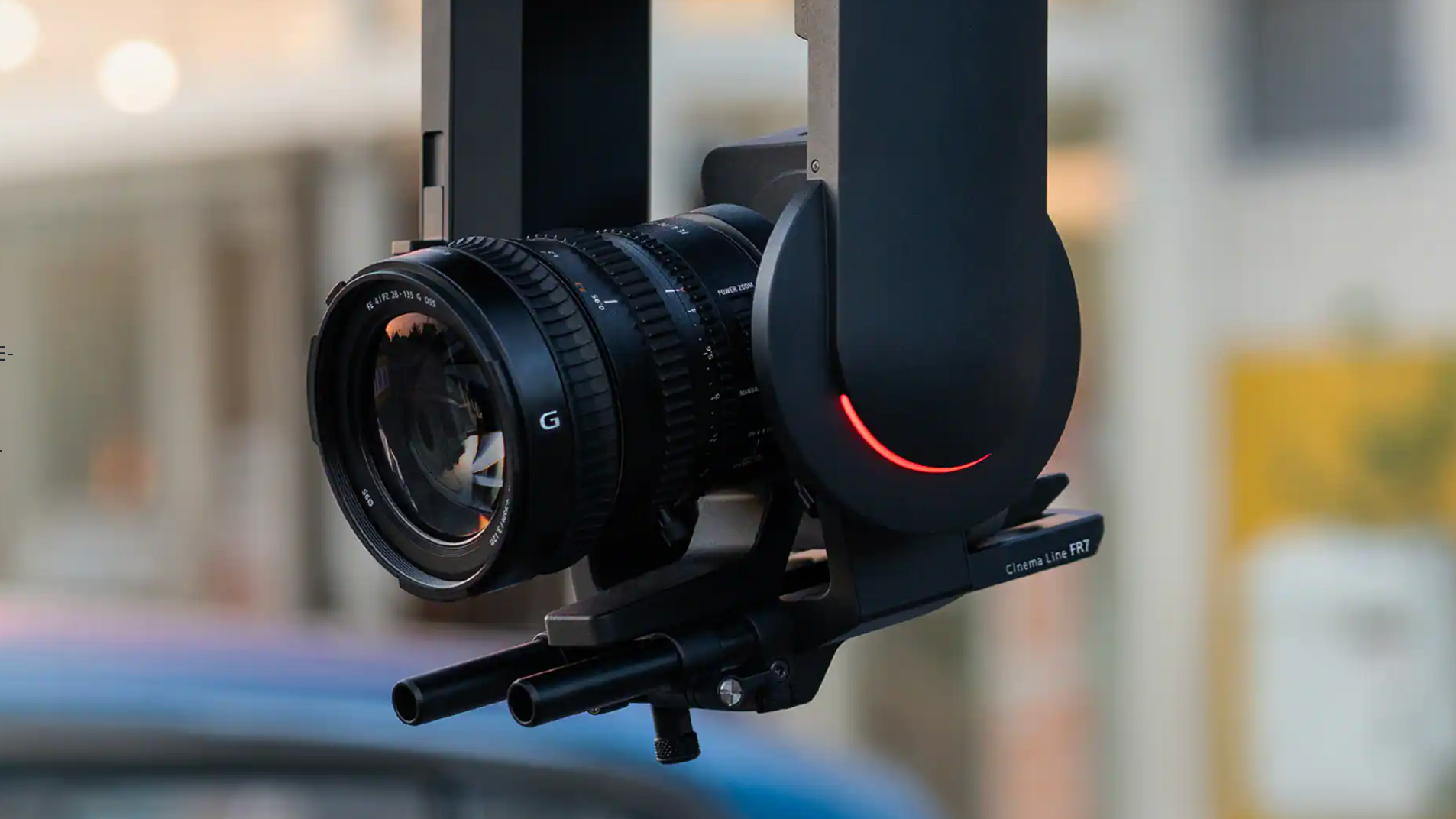
Best for Hollywood
9. Arri Alexa Mini LF
Specifications
Reasons to buy
Reasons to avoid
✅ Flexible Recording Modes: Offers native 4K recording in multiple sensor modes (LF Open Gate, LF 16:9, LF 2.39:1) with ARRIRAW or ProRes options, providing versatility for different cinematic needs.
✅ LPL Lens Mount Compatibility: Features Arri’s LPL lens mount, optimized for large-format capture, and compatible with PL-mount lenses using an adapter, accommodating a wide range of lenses.
❌ High Cost: The Alexa Mini LF's premium features come with a significant price tag, making it inaccessible for most independent filmmakers or smaller studios.
❌ Rental Preference: Due to its high cost, many top studios prefer to rent the Alexa Mini LF rather than purchasing it outright, reflecting its status as a specialized tool rather than a standard investment.
Built around a large-format 4K version of the original ALEXA sensor, the Arri Alexa Mini LF offers a native 4K recording in three sensor modes, with ARRIRAW or ProRes recording in LF Open Gate, LF 16:9, or LF 2.39:1 modes. The Alexa LF combines large-format resolution with an optimal pixel size for excellent image quality producing vivid, nuanced images with natural skin tones and smooth bokeh.
Designed with Arri's LPL lens mount that has been optimized for large-format capture and is compatible with all PL-mount lenses with the use of a PL-to-LPL adapter to give you the best of either shorter and lightweight lenses or standard, heavier PL-mount lenses. The Alexa Mini LF is a hybrid of the Alexa Mini and the Alexa LF, as it retains the same large format sensor, but the form factor of the Mini.
The new exterior has a left-side media bay with two rows of connectors on the back and a slot to insert 1TB Codex media. It also features six user buttons, three more than the Mini, to configure to your preferences, it also features extra 12 and 24V power outputs and a black burst/tri-level input, with the audio connector now having a 6-pin, so it doesn't conflict with the 5-pin timecode port.
If you know anything about cinema cameras, you know Arri is a gold standard in Hollywood for decades however, this reputation comes at a very eye-watering price, which is unobtainable to most of us (and even top studios hire them, rather than buying them outright).
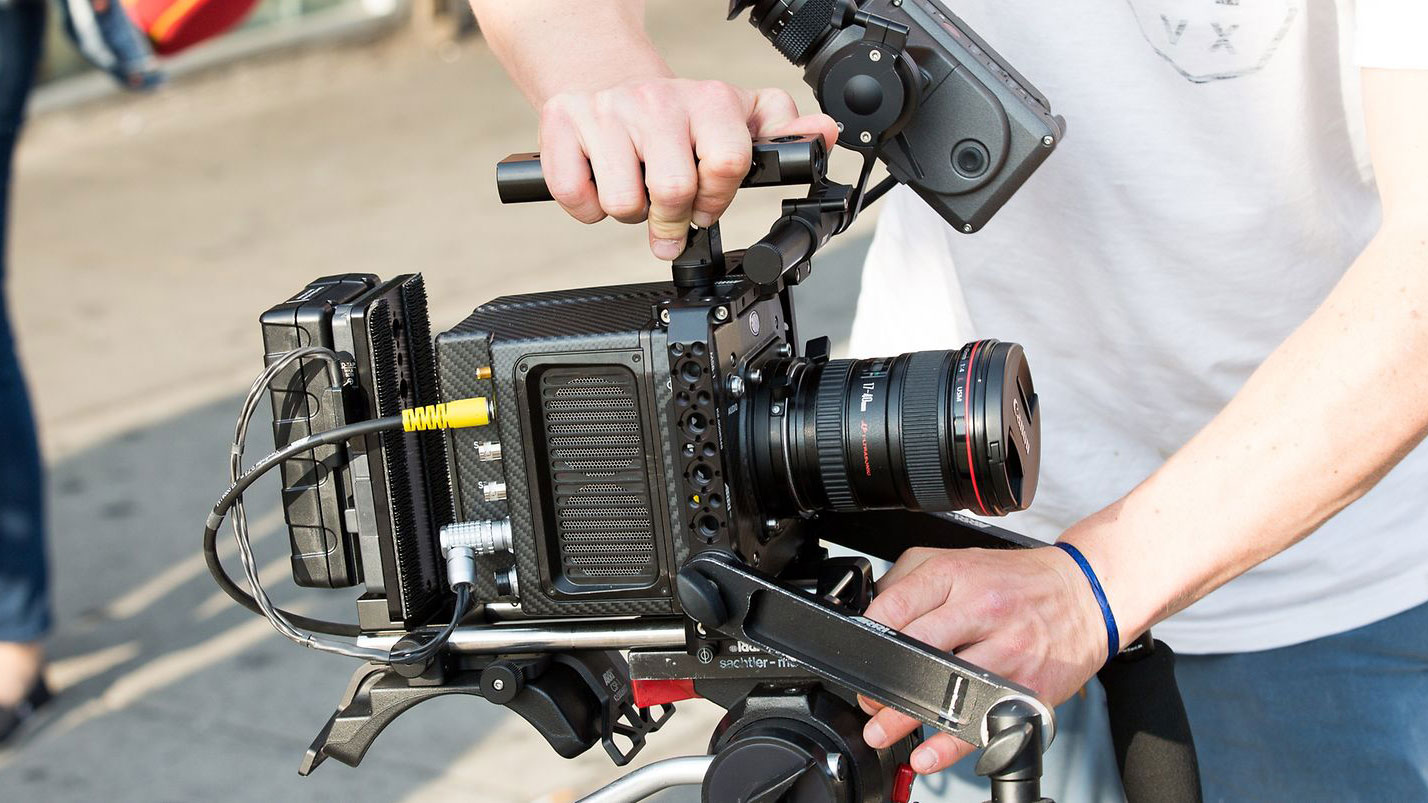
Best for productions
10. Blackmagic Ursa Mini Pro 4.6K G2
Specifications
Reasons to buy
Reasons to avoid
✅ Enhanced Sensor and Recording: Features an updated Super35 4.6K sensor with 15 stops of dynamic range and high frame rate recording up to 300 fps, providing high-quality, flexible shooting options.
✅ Built-in ND Filters: Equipped with a built-in ND filter wheel offering four stops (2, 4, 6) plus a clear filter, ideal for adjusting exposure quickly in changing light conditions.
❌ Size and Portability: The URSA Mini Pro 4.6K G2 is relatively bulky compared to more compact models, potentially impacting portability and ease of use in tight or dynamic shooting environments.
❌ Learning Curve: The expanded control set and additional functionality may present a learning curve for users who are new to Blackmagic cameras or high-end cinema equipment.
Upping the electronics and recording capabilities of its Mini Pro predecessor, Blackmagic Design's URSA Mini Pro 4.6K G2 brings an expanded control set and even more functionality. The G2 introduces an updated Super35 4.6K sensor featuring 15 stops of dynamic range at 3200 ISO, high frame rate recording up to a whopping 300 fps, and additional recording functionality.
The exterior of the camera also gains a monochrome LCD panel which displays essential shooting data at a glance, it works but would be nice to see a color screen. Another welcome feature for users is the built-in ND filter wheel offering four-position wheel switches between two, four, and six stops of neutral density, plus a clear filter for no exposure reduction - a godsend for anyone out on location in variable light conditions.
Behind the display, two SD slots sit beside CFast 2.0 card slots enabling more affordable media to be used for less intensive recording formats. The G2 also introduces a USB-C expansion port, so you can record directly to external drives as seen on the Pocket Cinema Camera line-up. The default electronic EF lens mount is also user-interchangeable and adjustable to ensure proper flange focal distance with either PL, Nikon F, or B4 mounts - making this camera a great universal tool for many shooting scenarios.
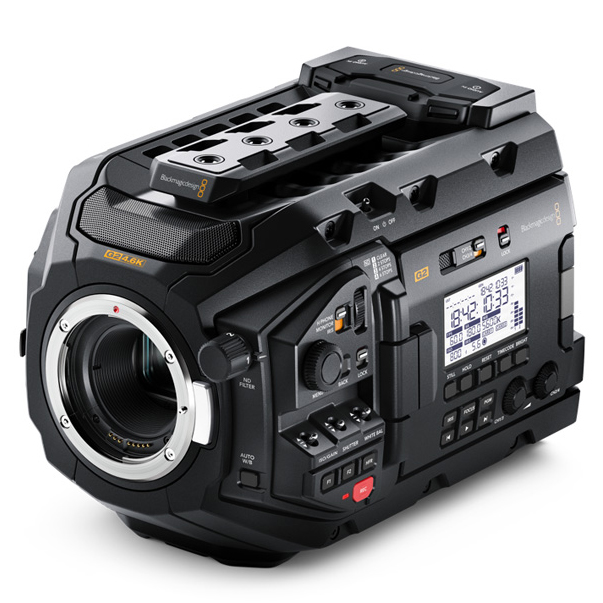
Best for documentaries
11. RED Komodo 6K
Specifications
Reasons to buy
Reasons to avoid
✅ Flexible Recording Options: Capable of recording in REDCODE RAW at up to 6K at 40 fps, 5K at 48 fps, 4K at 60 fps, and 2K at 120 fps, offering great flexibility for post-production and creative shooting.
✅ Phase-Detect Autofocus (PDAF): A notable feature for RED, PDAF provides fast and accurate focusing with compatible lenses, including those adapted from Canon EF mounts.
❌ Additional Adapter Required: To use Canon EF-mount lenses, a separately available EF-to-RF adapter is needed, which adds to the overall cost and complexity.
❌ No Built-in ND Filters: Unlike some cinema cameras, the Komodo lacks built-in ND filters, which means users need to rely on external solutions for controlling exposure in varying light conditions.
This amazing cube design measuring 4 x 4 x 4in and weighing just 2.1 Ib brings RED's legendary RAW codec and image quality to an affordable price point within the realm of cinema cameras. Key to achieving this compact goal RED used the Canon RF lens mount and the Komodo's 19.9MP Super35 CMOS sensor, which boasts Global Shutter technology.
This sensor can create images with 16+ stops dynamic range and eliminates rolling shutter artifacts. Users can also be certain they are getting RED quality thanks to the ability to record up to 6K at 40 fps, 5K at 48 fps, 4K at 60 fps, and 2K at 120 fps in REDCODE RAW for incredible flexibility in post-production.
A first for RED is the ability to use Phase-Detect Autofocus (PDAF) with compatible lenses. This includes adapted Canon EF-mount lenses used with a separately available EF-to-RF adapter with electronic communication. Phase-detect systems are known for their speed by measuring and comparing distance and provide a reliable, accurate system for video production. Additionally, the touchscreen can be used for quickly changing focus and selecting subjects.
With its 16-bit REDCODE RAW recording capability, compact form factor, and 6K 40 fps or 2K 120fps recording formats, the Komodo is now a key player within the realm of professional cinema cameras.

Best for EF lenses
12. Canon EOS C300 Mark III
Specifications
Reasons to buy
Reasons to avoid
✅ Dual Gain Output Technology: The first camera to feature Canon’s Dual Gain Output (dual native ISO) technology, offering exceptional low-light performance and HDR acquisition with up to 16 stops of dynamic range.
✅ High Frame Rate Recording: Capable of recording up to 120 fps in 4K Super35 and 180 fps in 2K Super16, providing flexibility for slow-motion and high-speed shots.
❌ High Cost: While packed with features, the C300 Mark III is a significant investment, and many of its advanced capabilities can be found in more affordable alternatives.
❌ Size and Weight: Its modular design may lead to a larger and heavier setup compared to some other cinema cameras, potentially impacting portability and ease of use in certain shooting conditions.
Since the release of the C300 Mark II it was the go-to camera for many cinematographers but the release of the Mark III completely overshadows it.
The Canon C300 Mark III is the first camera to benefit from Canon's Dual Gain Output technology (in other words, dual native ISO) which results in a remarkably clean, low light picture quality, HDR acquisition, and an enormous 16 stops of dynamic range. It's capable of recording up to 120fps in 4K Super35 or 180fps in 2K Super16.
Internal recording options include 4K Cinema RAW Light at 10-bit or 12-bit, 2K Raw at 10-bit or 12-bit, and XF-AVC (MXF) at 4:2:2 10-but ALL-I or LongGOP. It benefits from a modular design that extends to the lens mount and can be changed between EF, PL, or EF Cinema Lock without needing to take it to be serviced. While it is a great camera, a lot of these features can be found in cheaper alternatives.

Best full frame alternative
13. Panasonic AU-EVA1 5.7K
Specifications
Reasons to buy
Reasons to avoid
✅ Versatile Recording: With a compatible on-camera recorder like the Atomos Shogun, the EVA1 can output 5.7K RAW and achieve up to 240 fps at 2K resolution, making it suitable for high-quality, slow-motion footage.
✅ High-Quality Imaging: The 5.7K CMOS sensor provides excellent 4K results through oversampling, and the dual native ISO (800 and 2500) reduces grain and enhances dynamic range.
❌ Accessory Dependency: While the EVA1 offers strong performance out-of-the-box, achieving top slow-motion capabilities and maximizing its potential often requires additional accessories, which could add to the overall cost and setup complexity.
❌ No Inherent Class-Leading Slow-Mo: Although the camera supports up to 240 fps at 2K, it may not offer the highest slow-motion performance compared to other dedicated high-speed cameras.
The Panasonic EVA1 weighs just 1.2kg without a lens, so is a great run and gun option, and even fits on a gimbal, especially if you’re shooting with a pancake lens. The 3.5-inch screen goes a step beyond articulating – you can detach it and reposition it depending on what you’re shooting, though outdoor viewability isn’t great.
As for its 5.7K CMOS sensor, it oversamples to create excellent 4K results, and just like the Blackmagic Pocket Cinema Camera 6K, the EVA1 also has a dual native ISO, giving it two sweet spots, one at an ISO of 800, the other at 2500.
This results in less grain and more dynamic range. With a compatible on-camera recorder such as the Atomos Shogun, the camera can output 5.7K RAW or 240fps at 2K resolution, so while the slow-motion capabilities might not be class-leading when working with the out-of-the-box kit, couple it with a few accessories and you can get stellar results that are ready for the big and small screen alike.
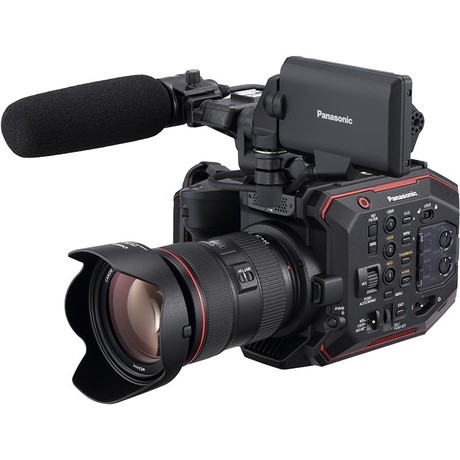
How does Netflix choose its approved cameras?
So as we've learned, not just any camera can be used to record shows intended for Netflix, and the ones that are must first have been approved and selected by the company, such as the ones featured in this guide that made the list.
Ever wondered what qualities make someone worthy enough to wield Thor's hammer? Netflix has thankfully released a new video that sheds some light on what makes a camera worthy enough to be deemed as "Netflix approved”.
Kris Prygrocki, Netflix’s camera systems specialist, reveals in the video posted to the company's YouTube channel (watch below) just how the cameras are evaluated and what criteria they must meet in order to be considered good enough to make the final cut.
Factors such as image quality, using the highest resolution and data rate, having a wide color gamut and log curve, adequate color reproduction, embedded meta-data, dynamic range, and bit depth all make a difference. Netflix also allows certain non-approved cameras to be used where necessary such as drones, GoPro's, slow-motion, and action cams in select situations for creative purposes.
The requirements for a product being Netflix-approved are said to be reliant on years of experience as well as feedback from professionals.
Read more:
Best cine lenses
Best 8K camera
Best camera for filmmaking
Best audio recorders
Best video editing software
The best laptop for video editing
Best camera sliders
The best on-camera monitors
The best camera deals, reviews, product advice, and unmissable photography news, direct to your inbox!

For nearly two decades Sebastian's work has been published internationally. Originally specializing in Equestrianism, his visuals have been used by the leading names in the equestrian industry such as The Fédération Equestre Internationale (FEI), The Jockey Club, Horse & Hound, and many more for various advertising campaigns, books, and pre/post-event highlights.
He is a Fellow of the Royal Society of Arts, holds a Foundation Degree in Equitation Science, and holds a Master of Arts in Publishing. He is a member of Nikon NPS and has been a Nikon user since his film days using a Nikon F5. He saw the digital transition with Nikon's D series cameras and is still, to this day, the youngest member to be elected into BEWA, the British Equestrian Writers' Association.
He is familiar with and shows great interest in 35mm, medium, and large-format photography, using products by Leica, Phase One, Hasselblad, Alpa, and Sinar. Sebastian has also used many cinema cameras from Sony, RED, ARRI, and everything in between. He now spends his spare time using his trusted Leica M-E or Leica M2, shooting Street/Documentary photography as he sees it, usually in Black and White.
